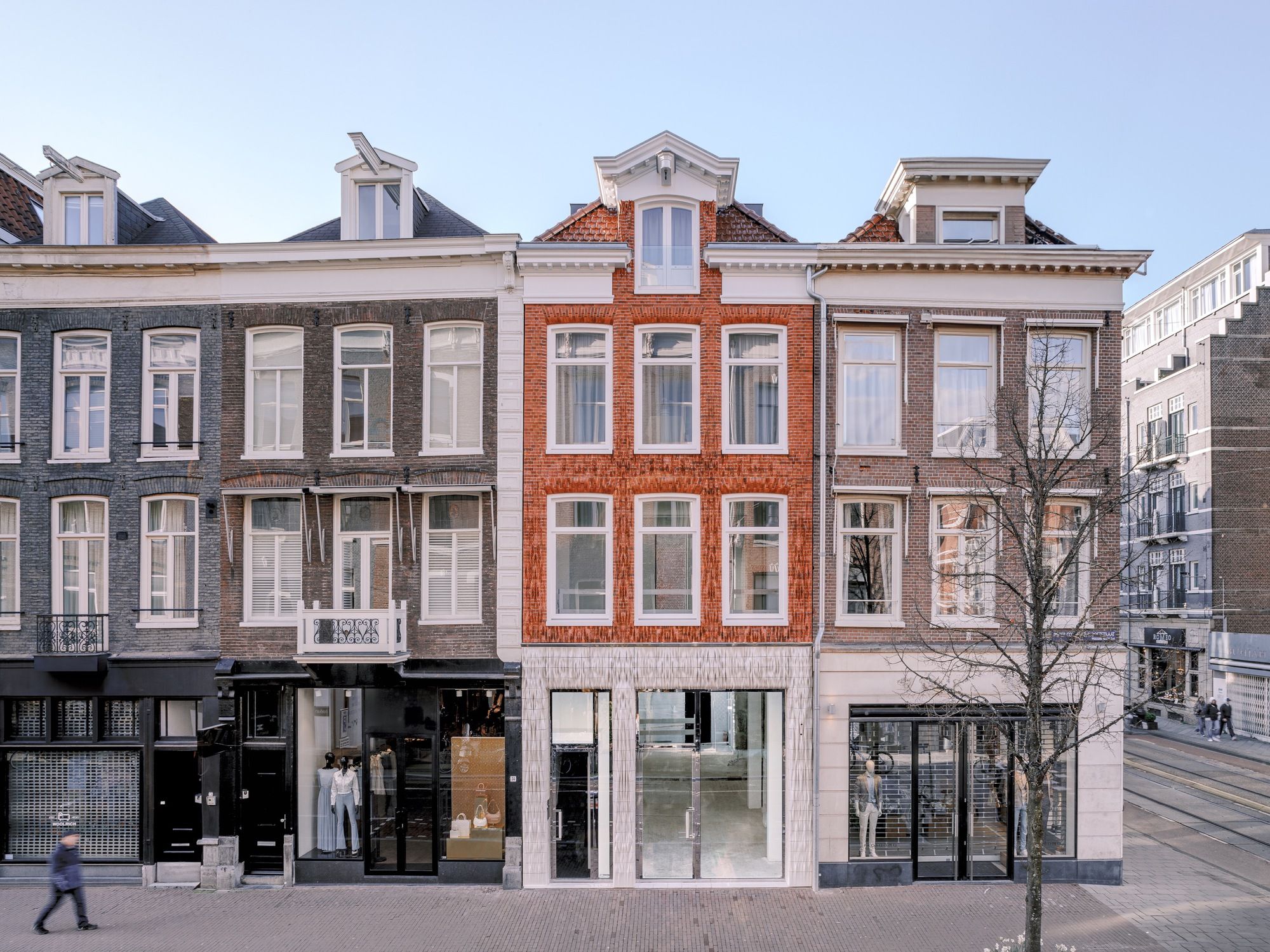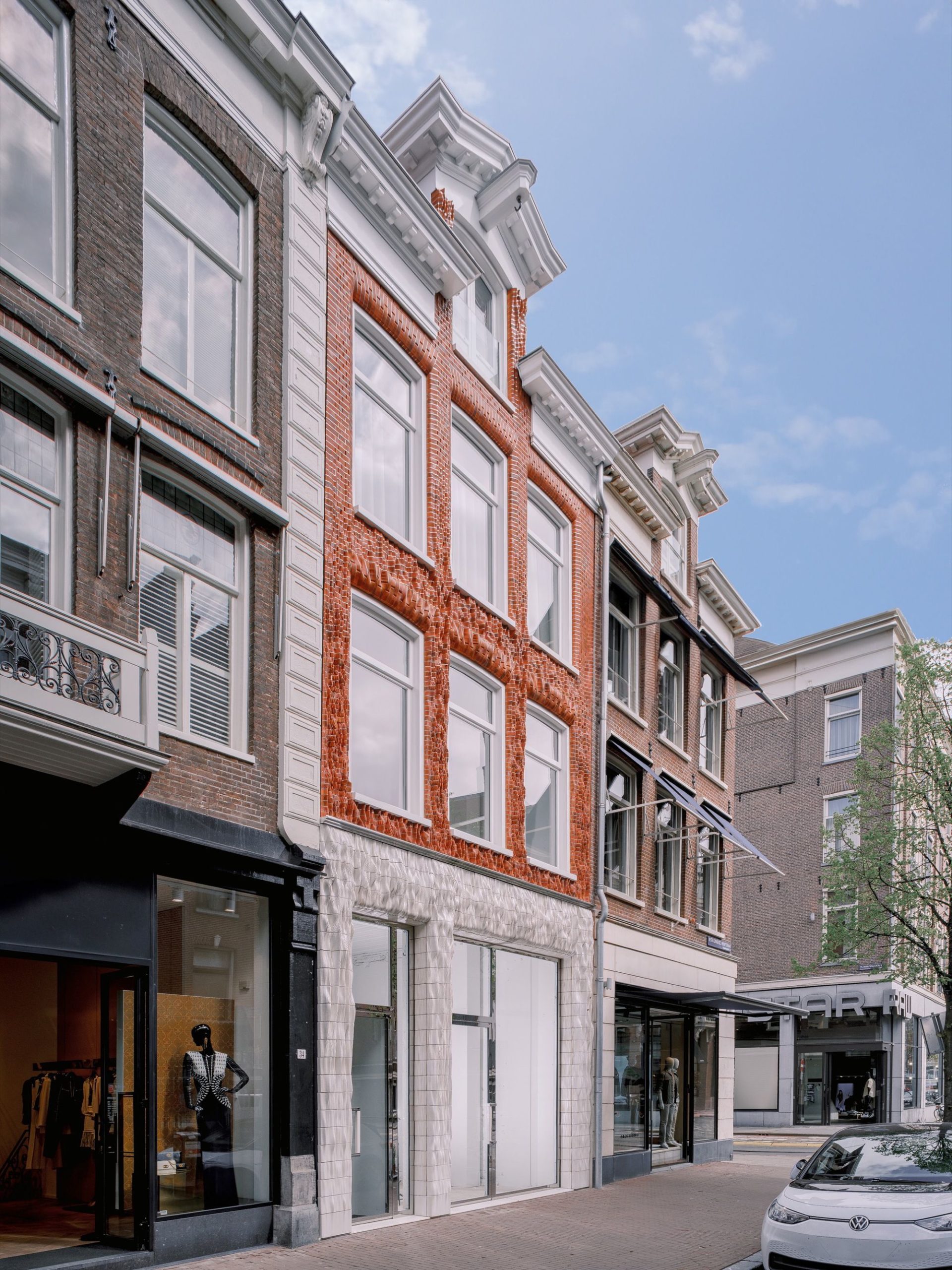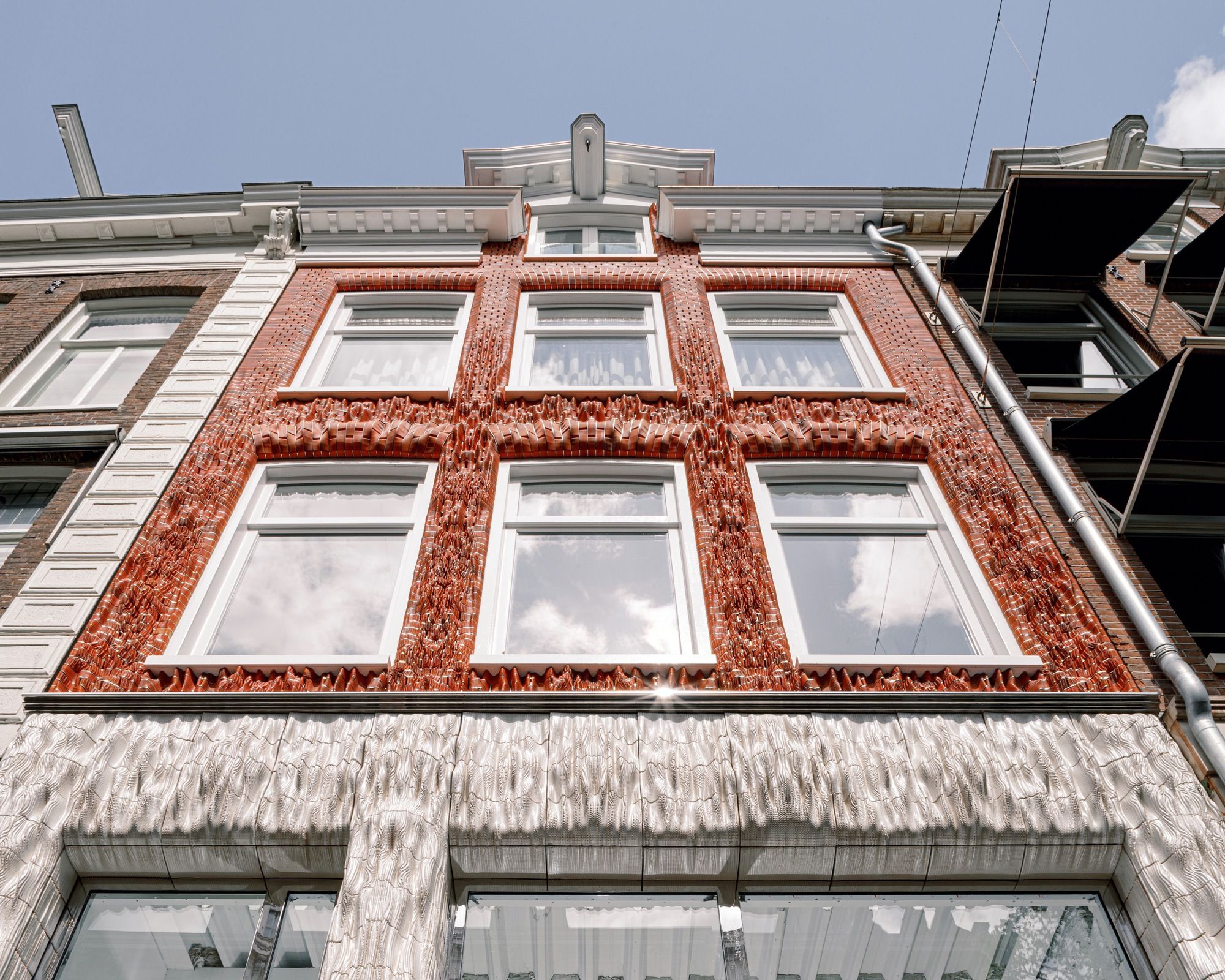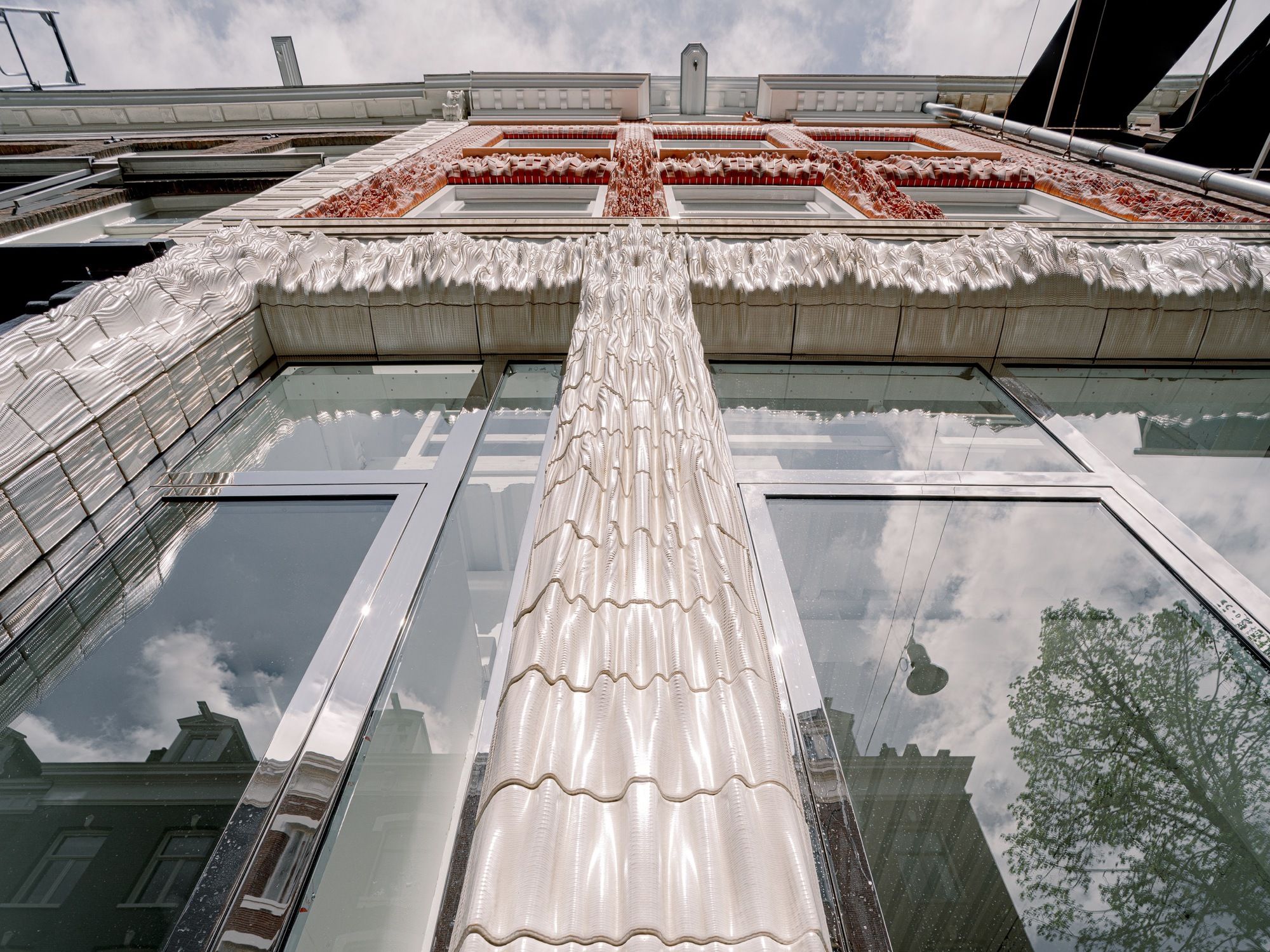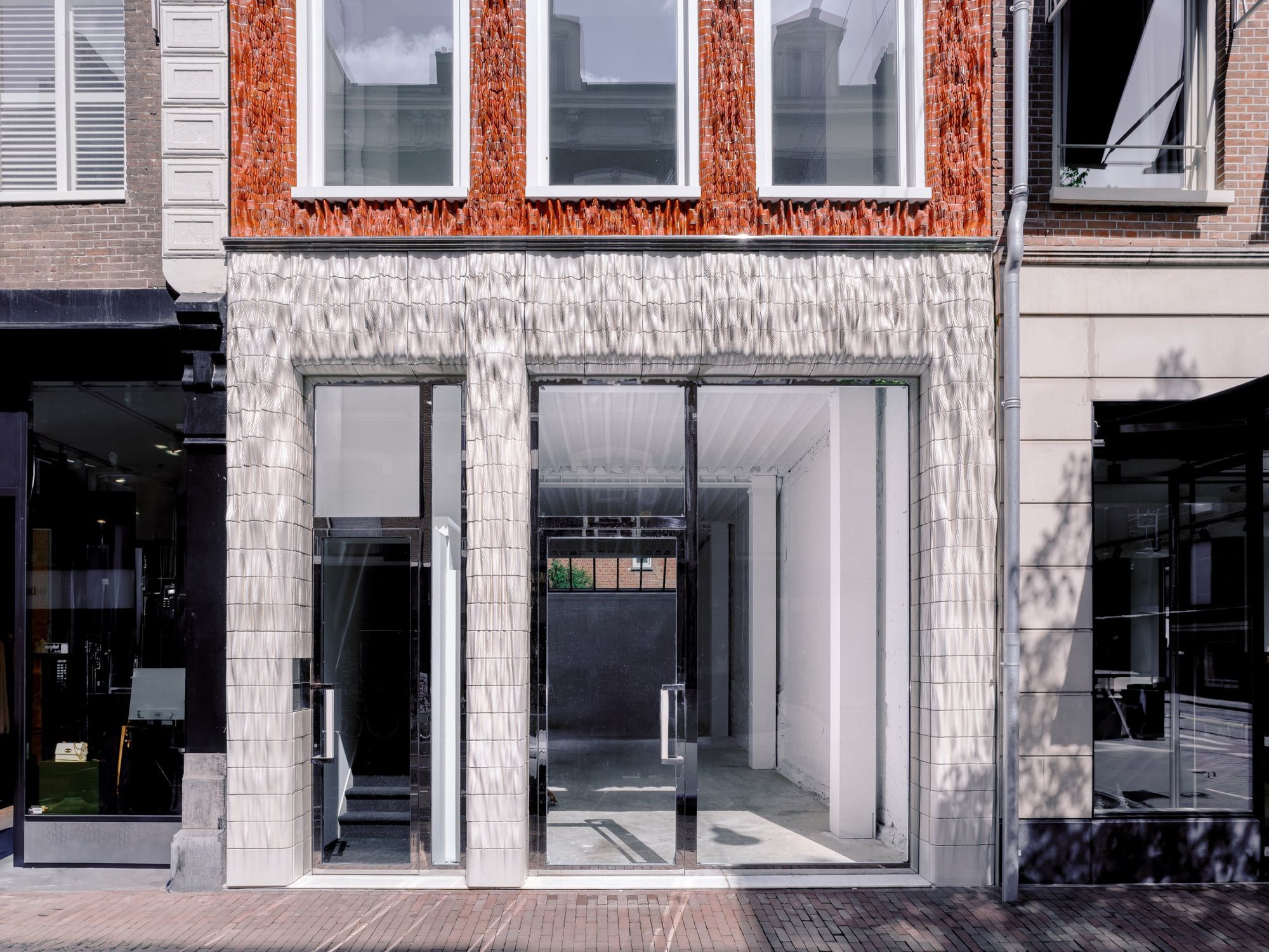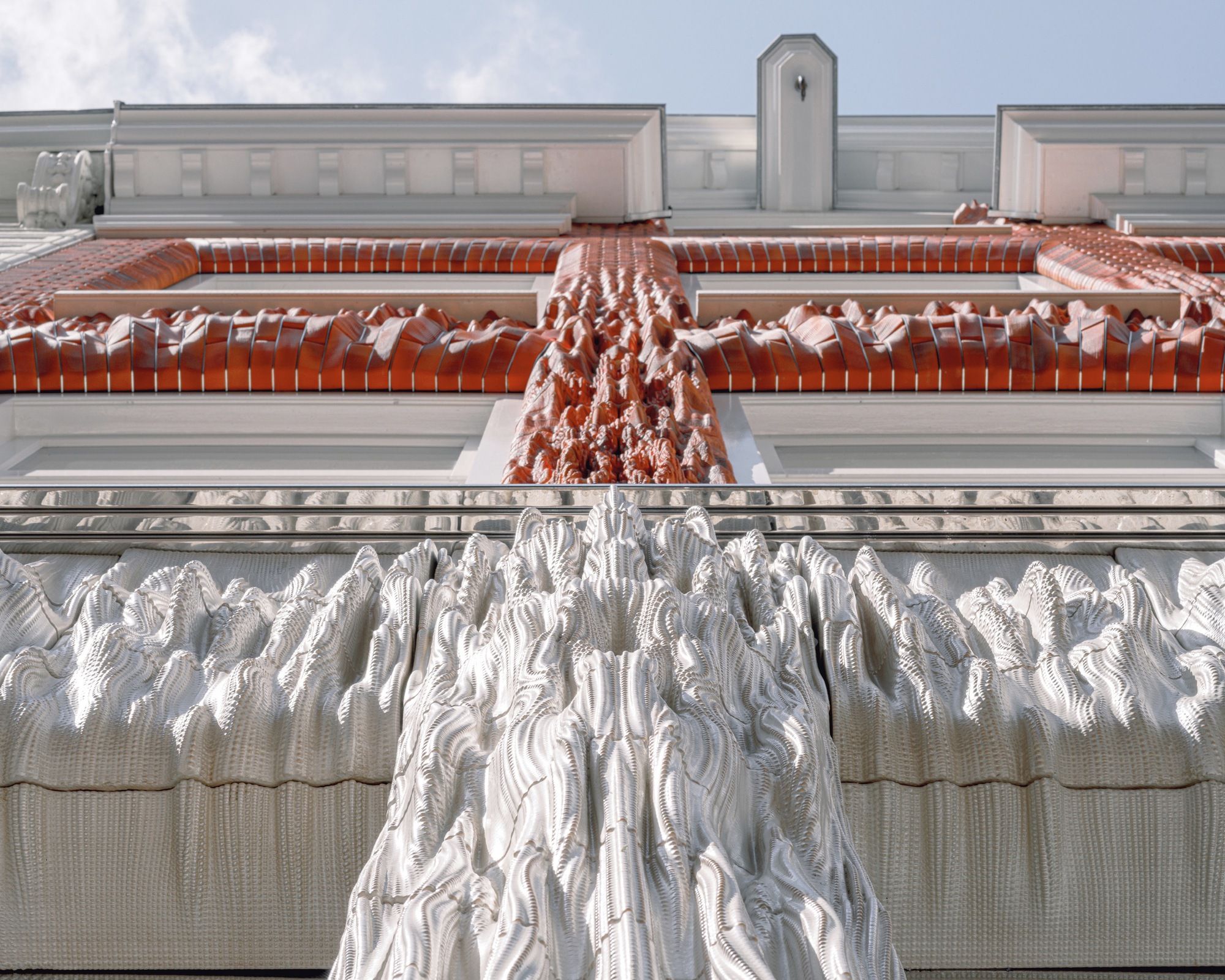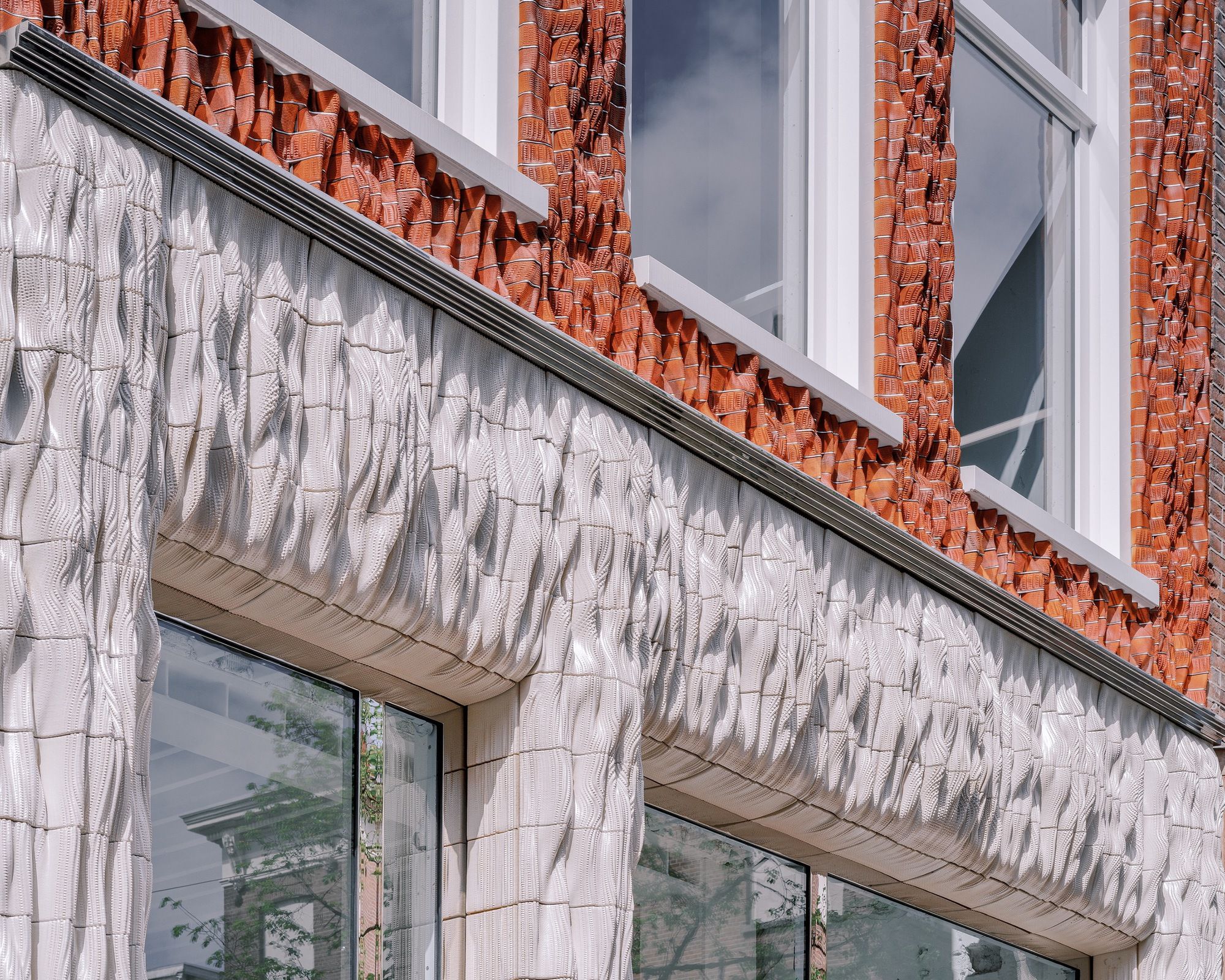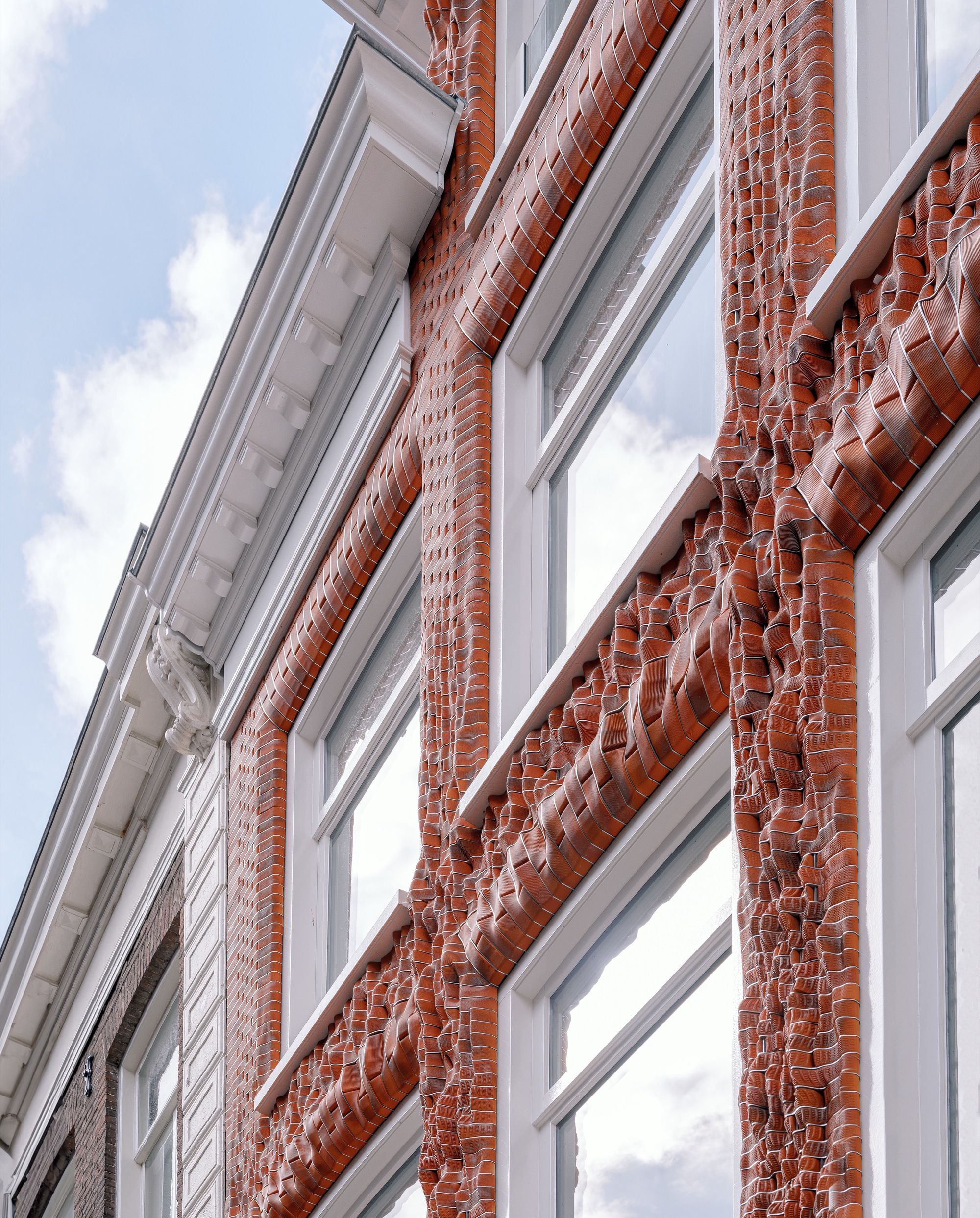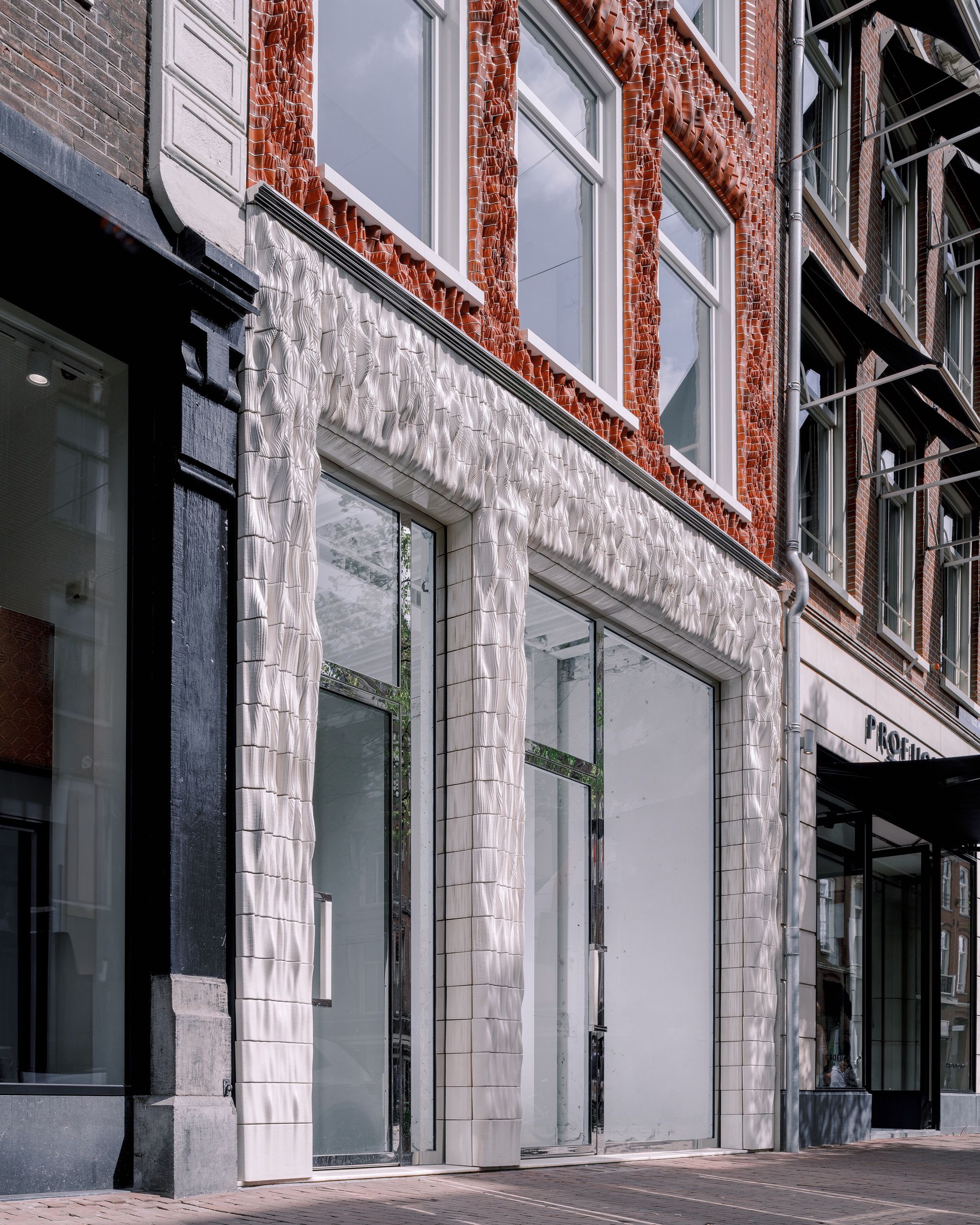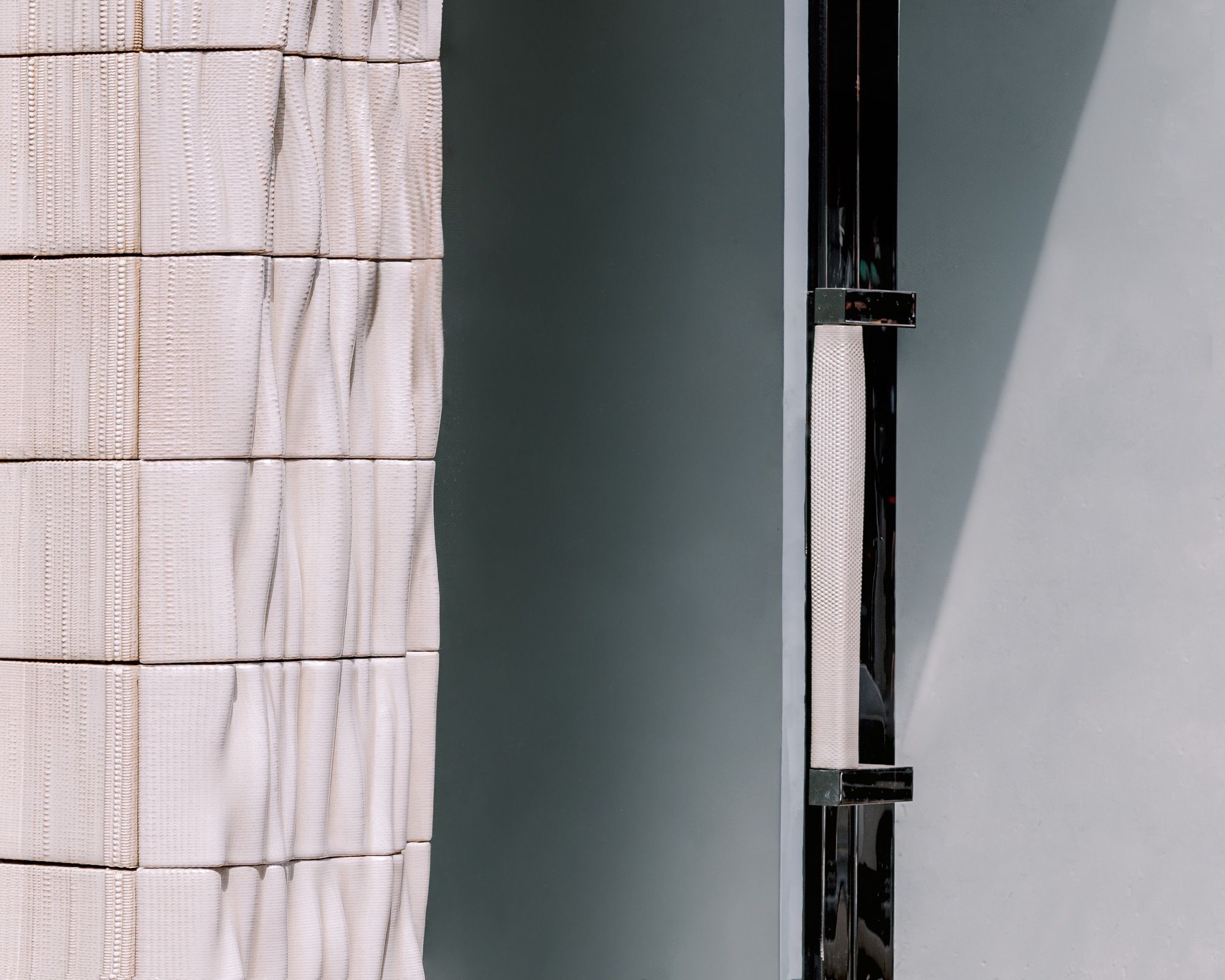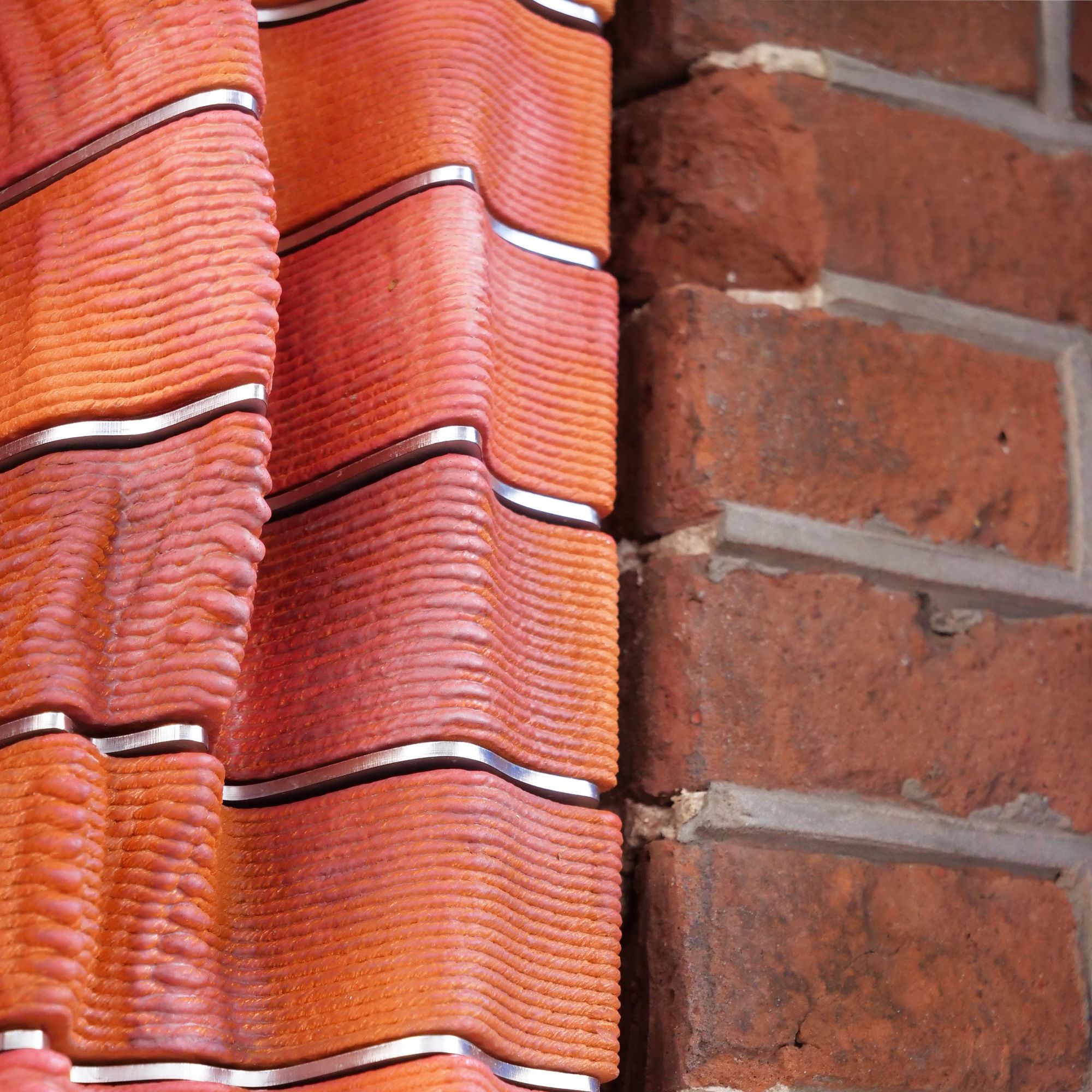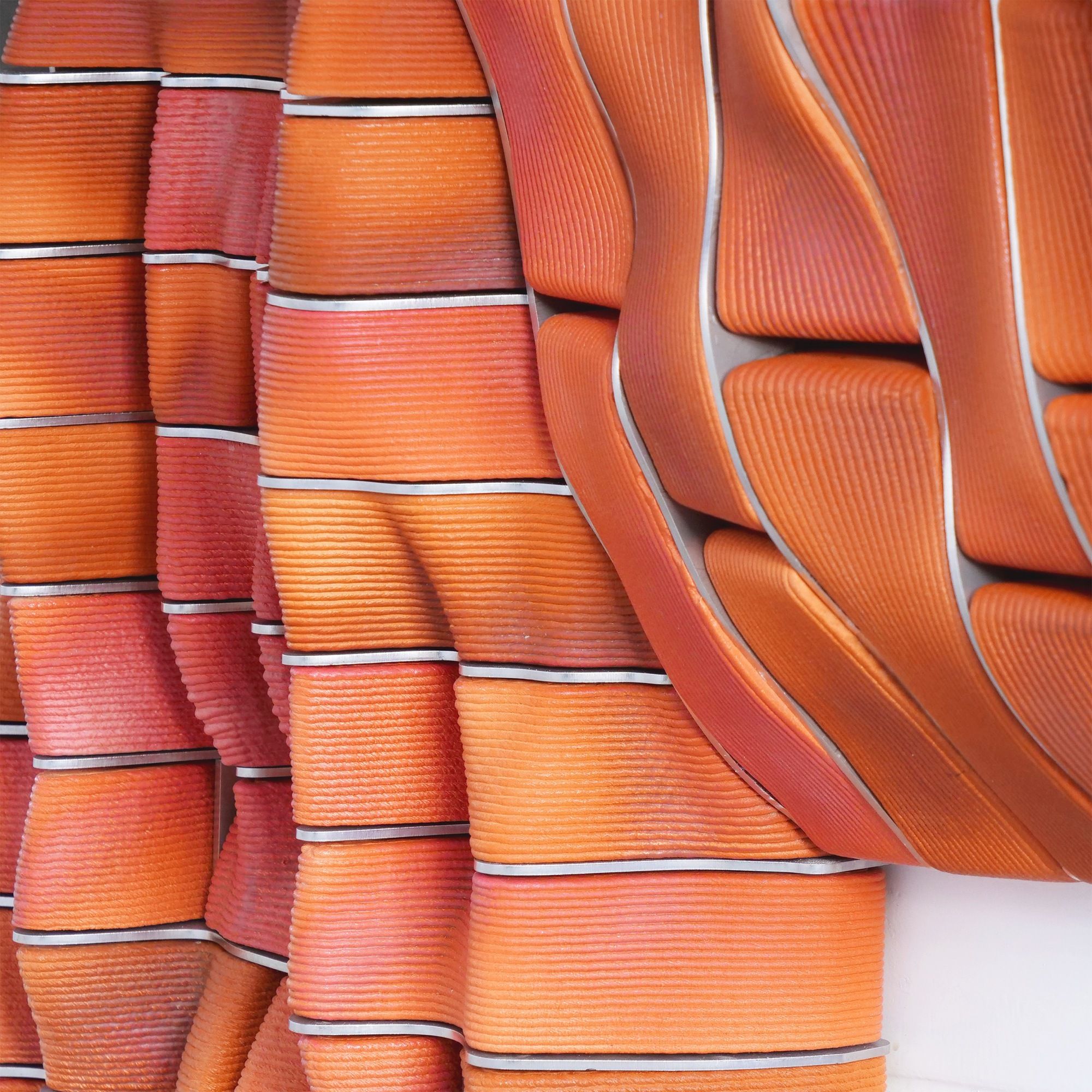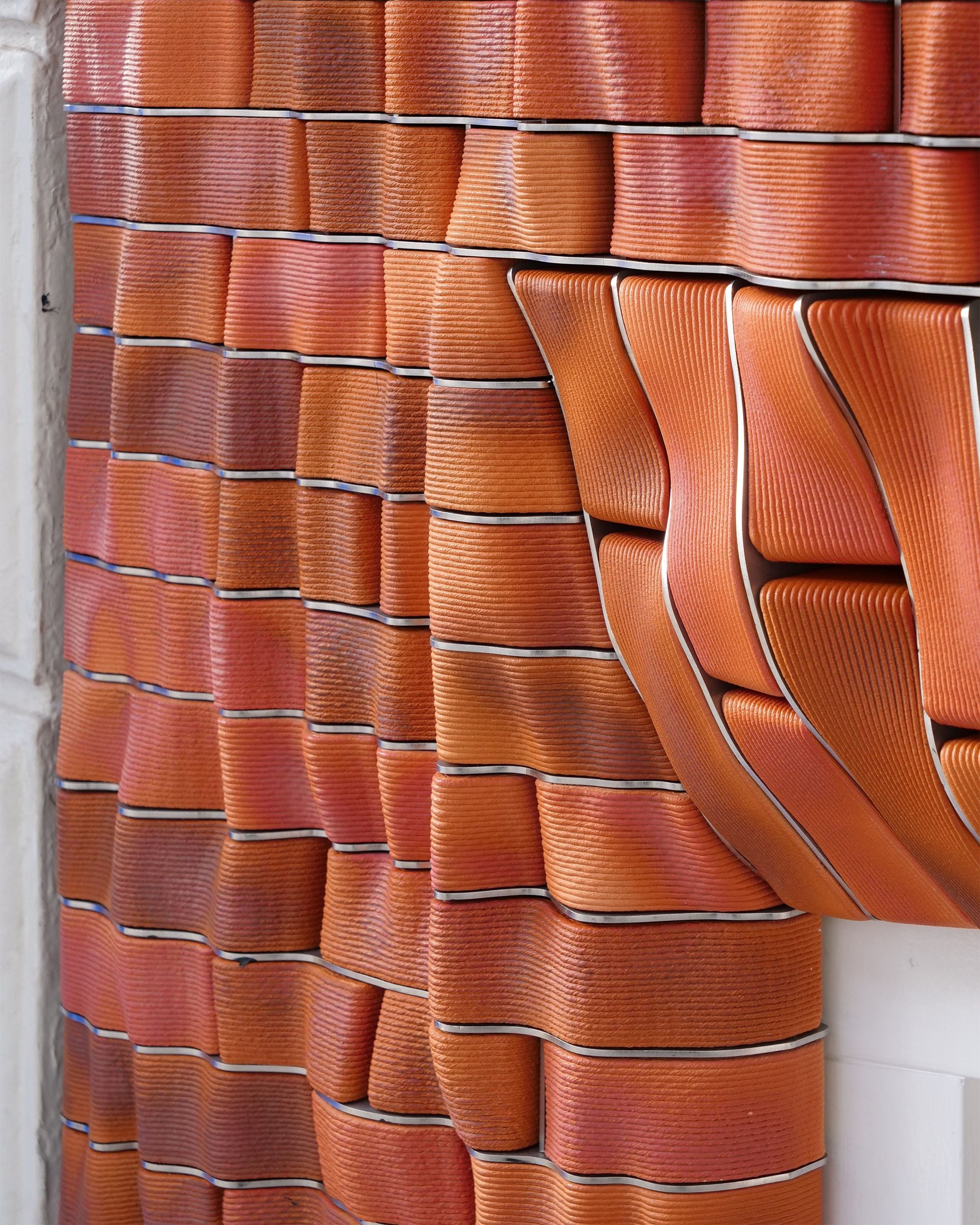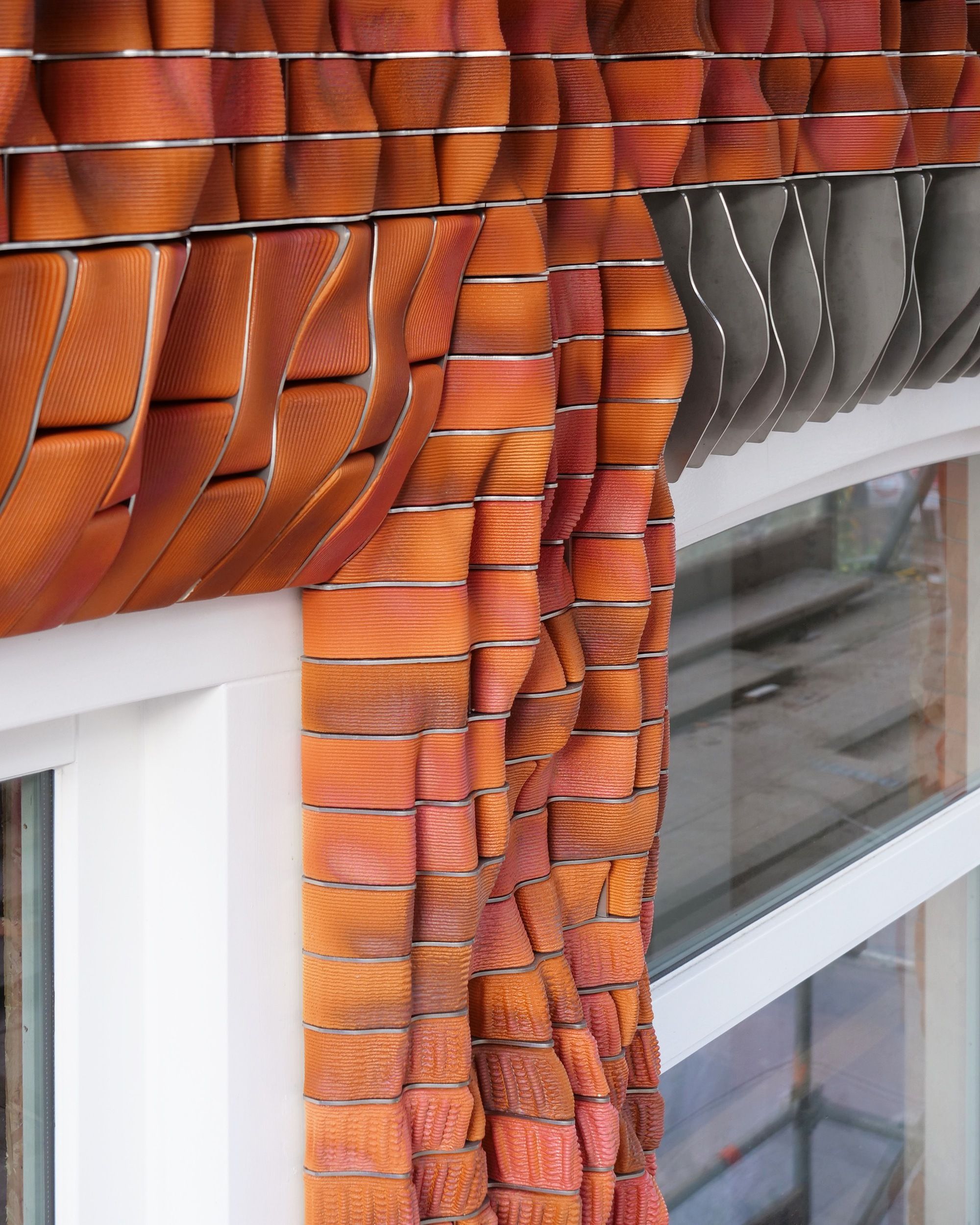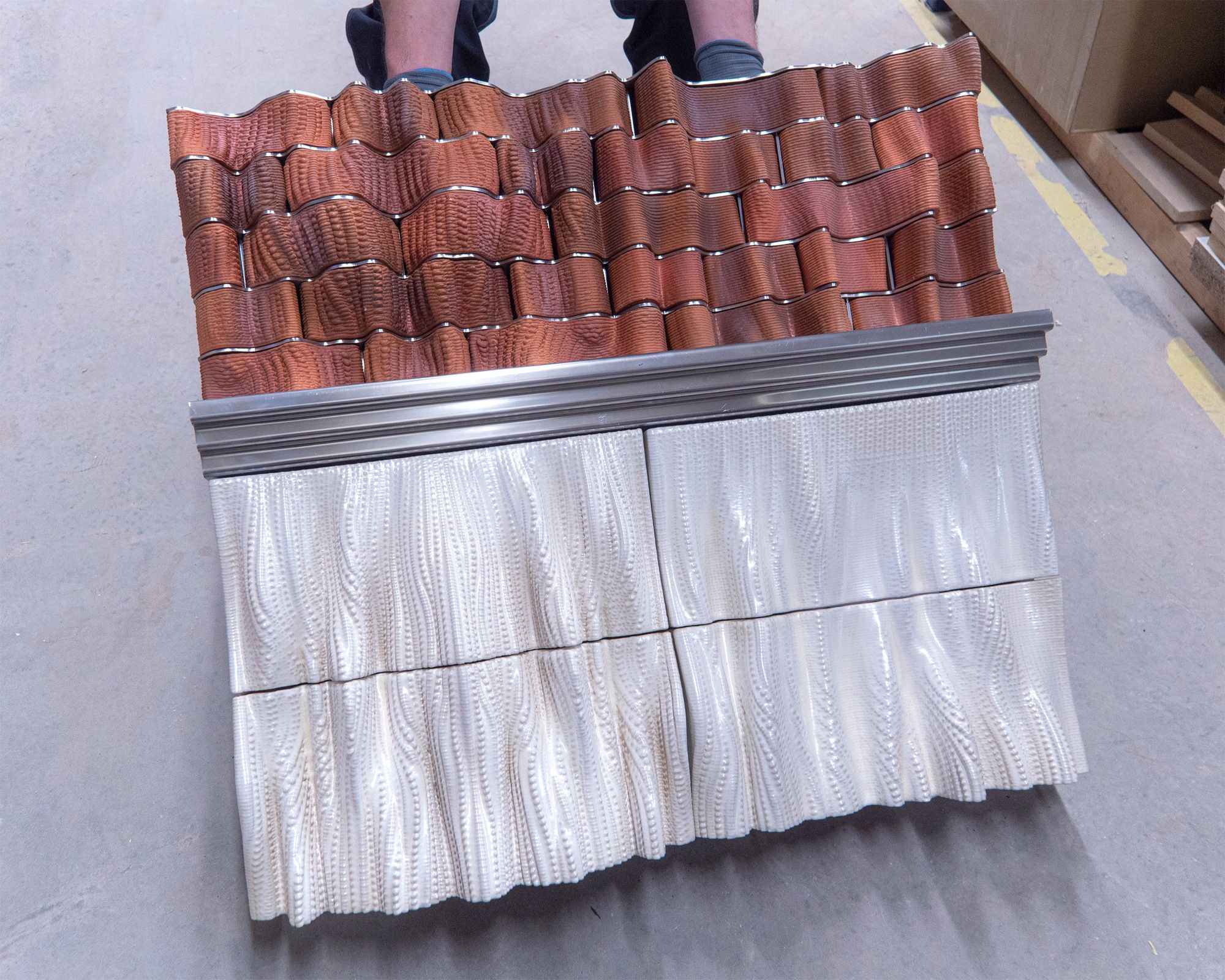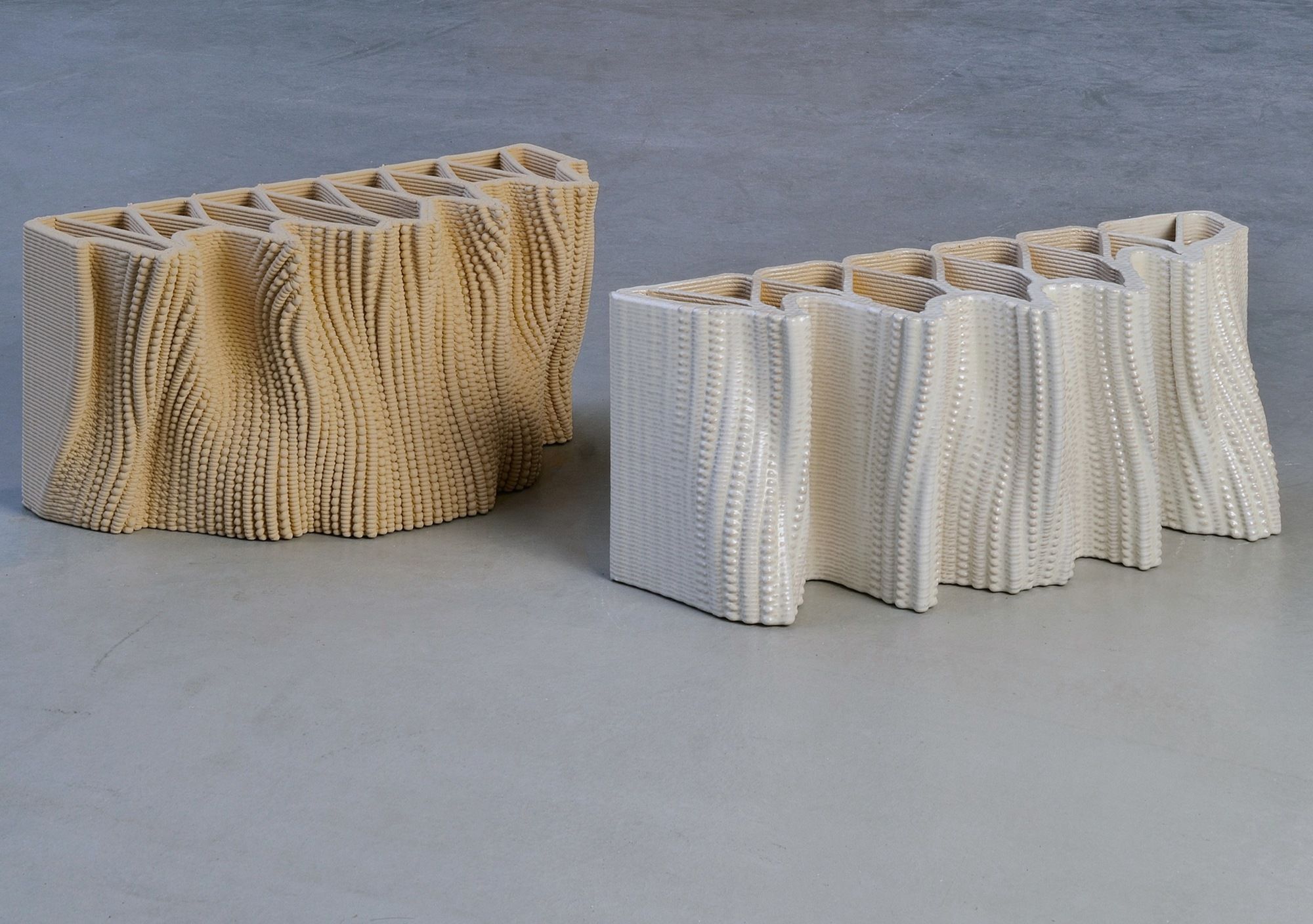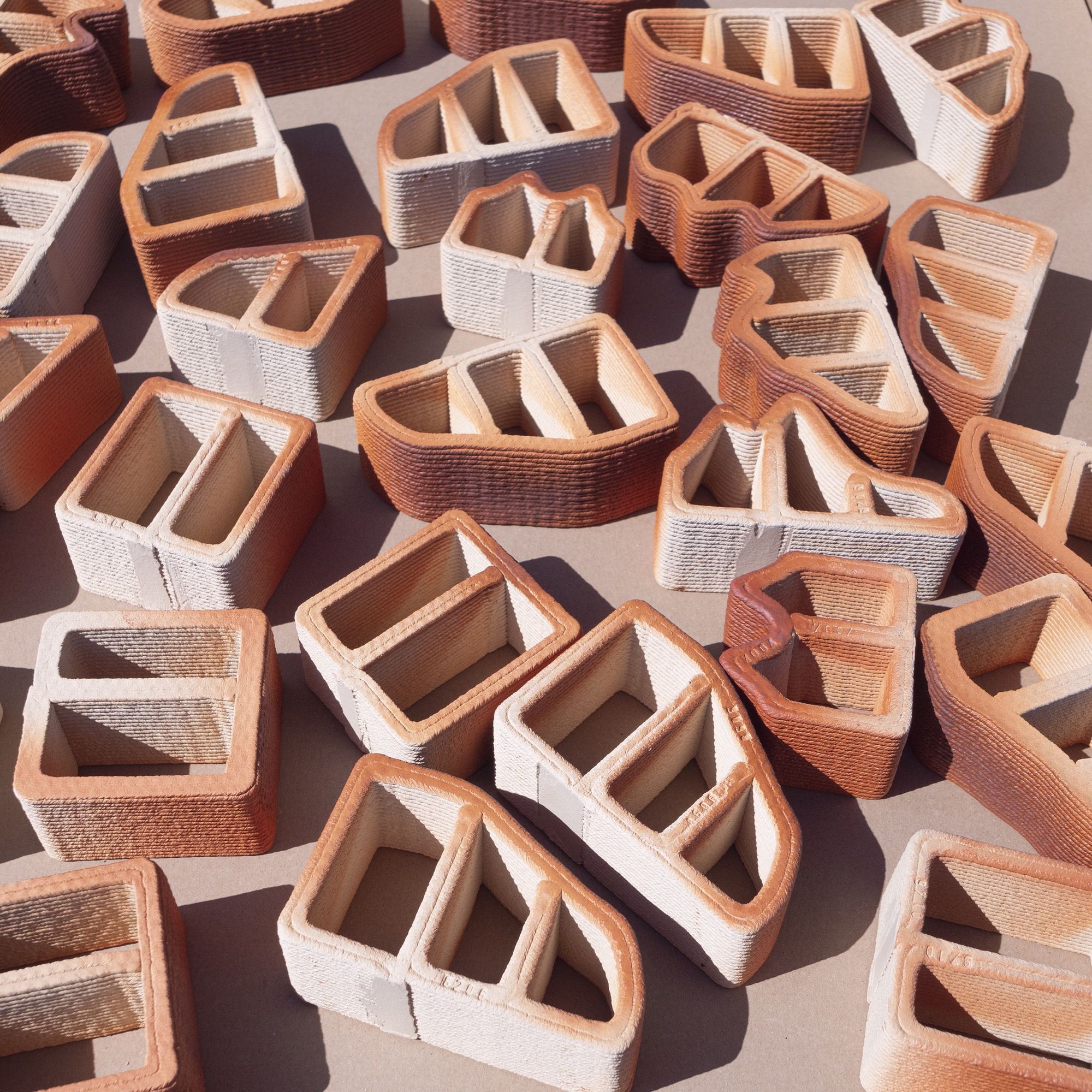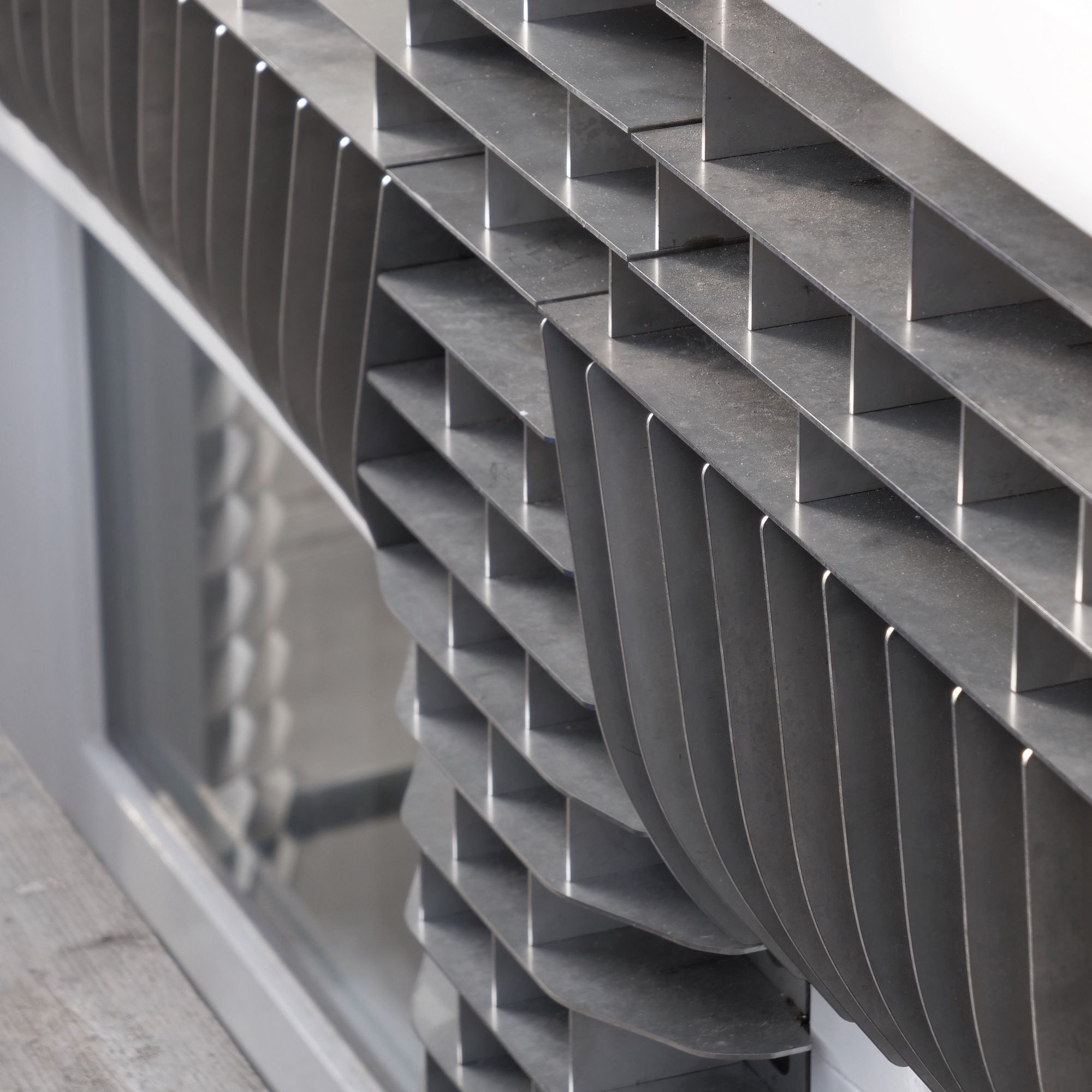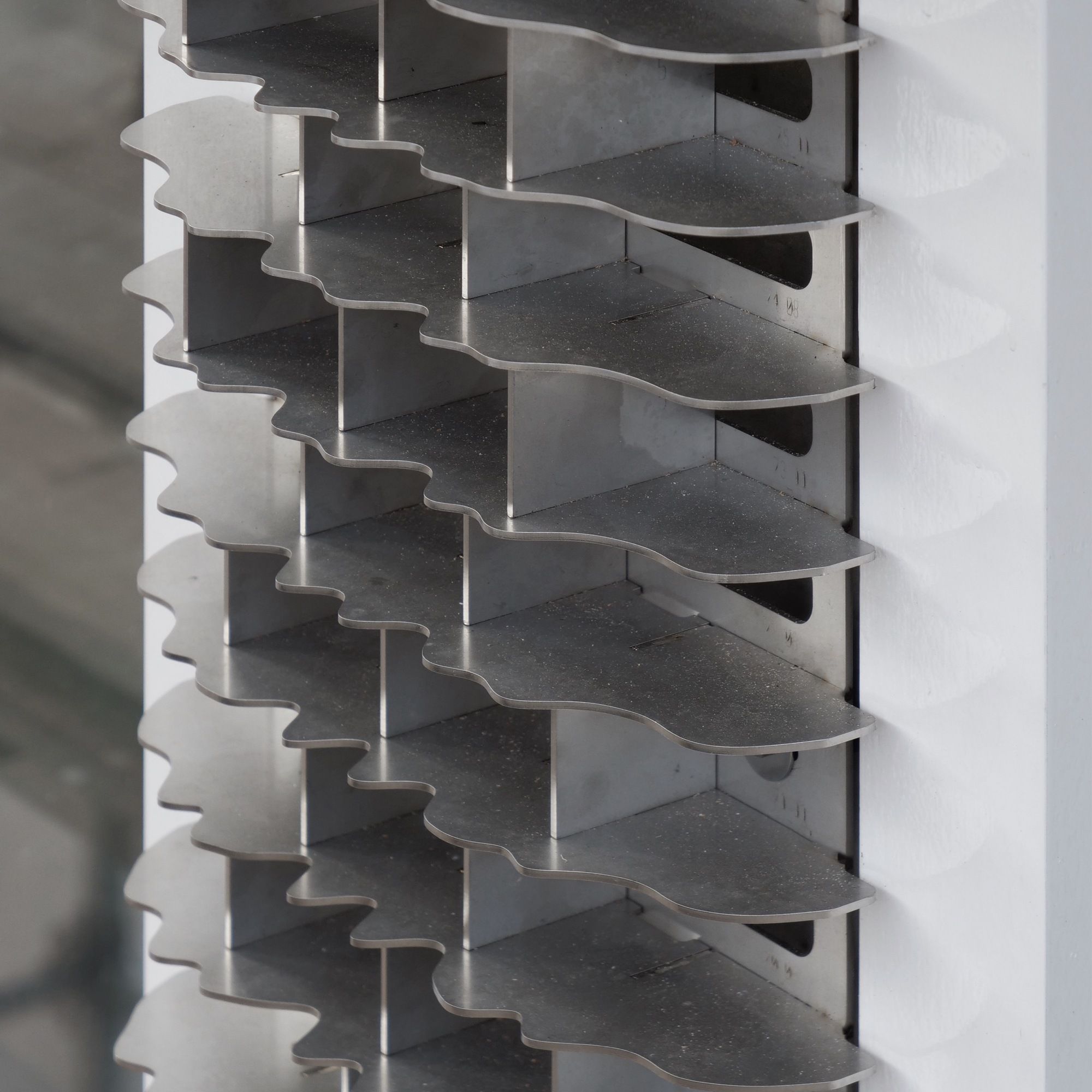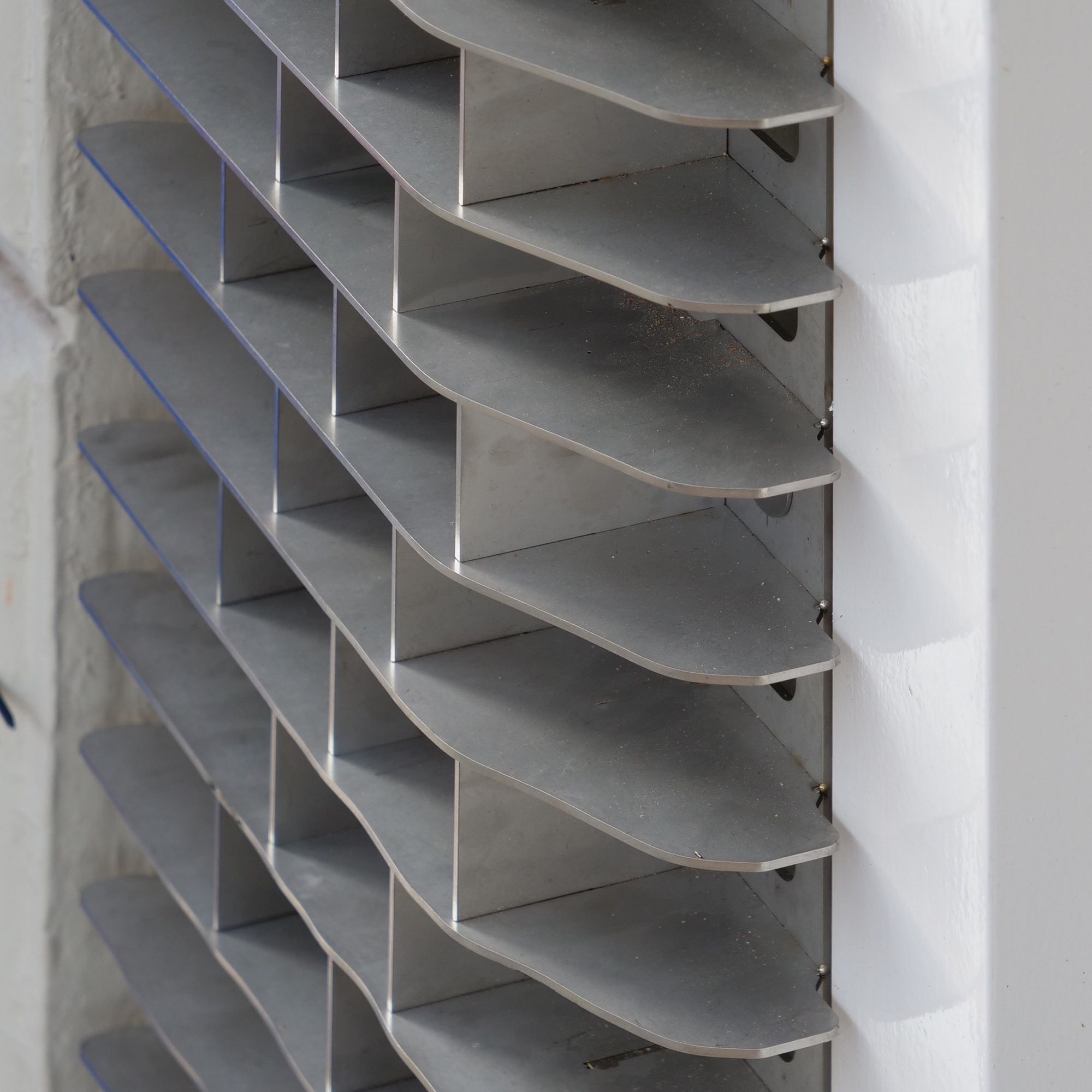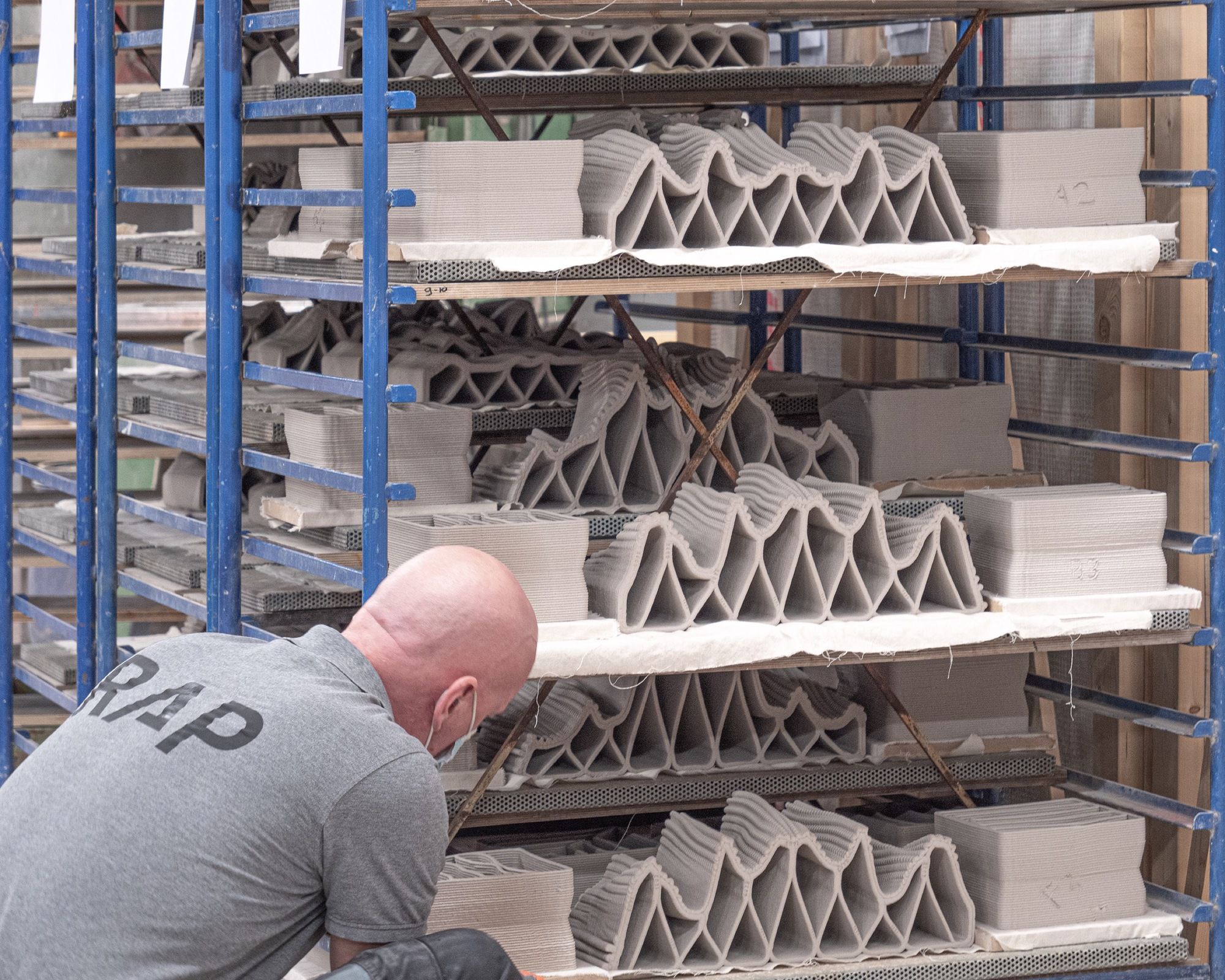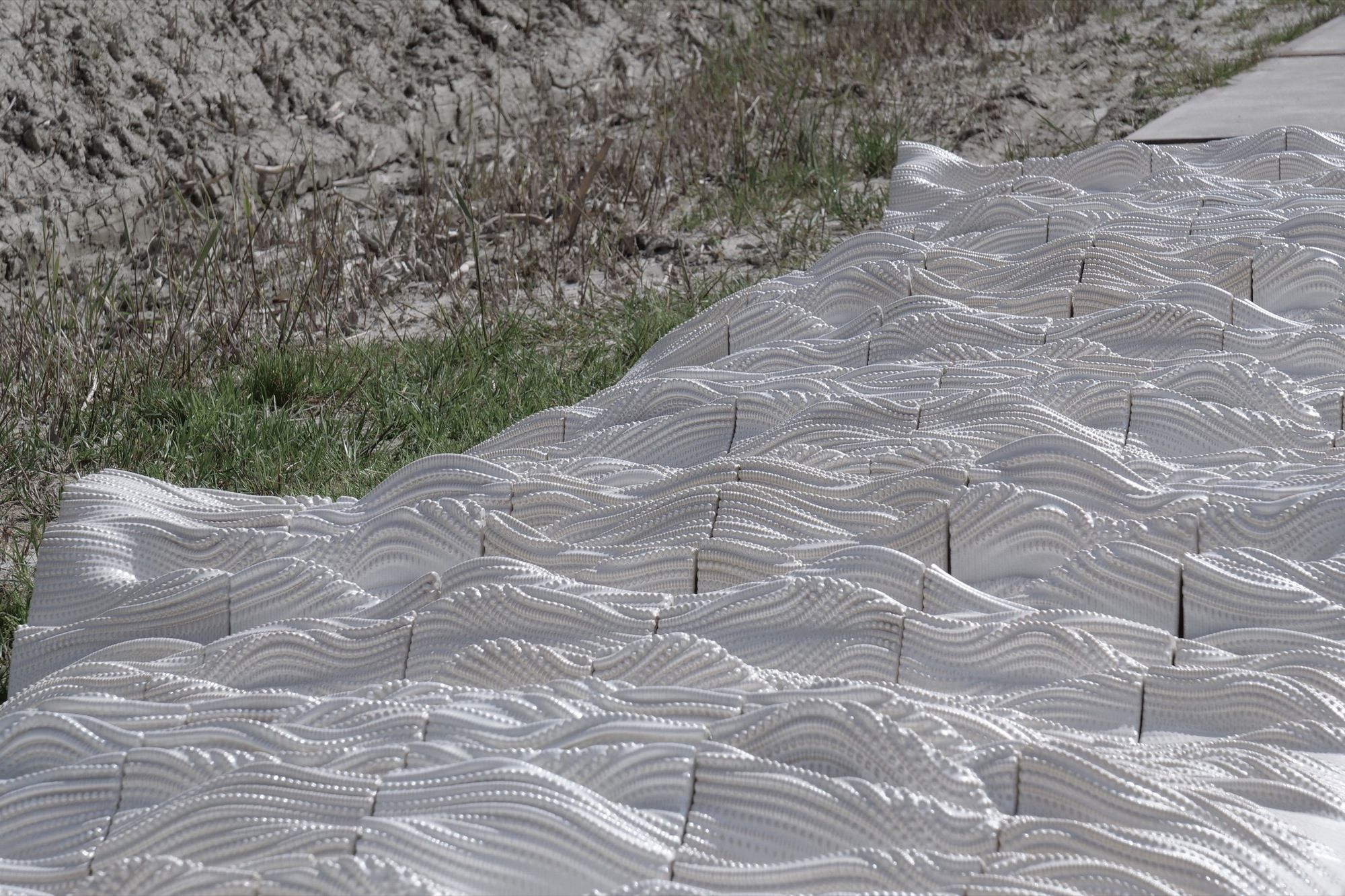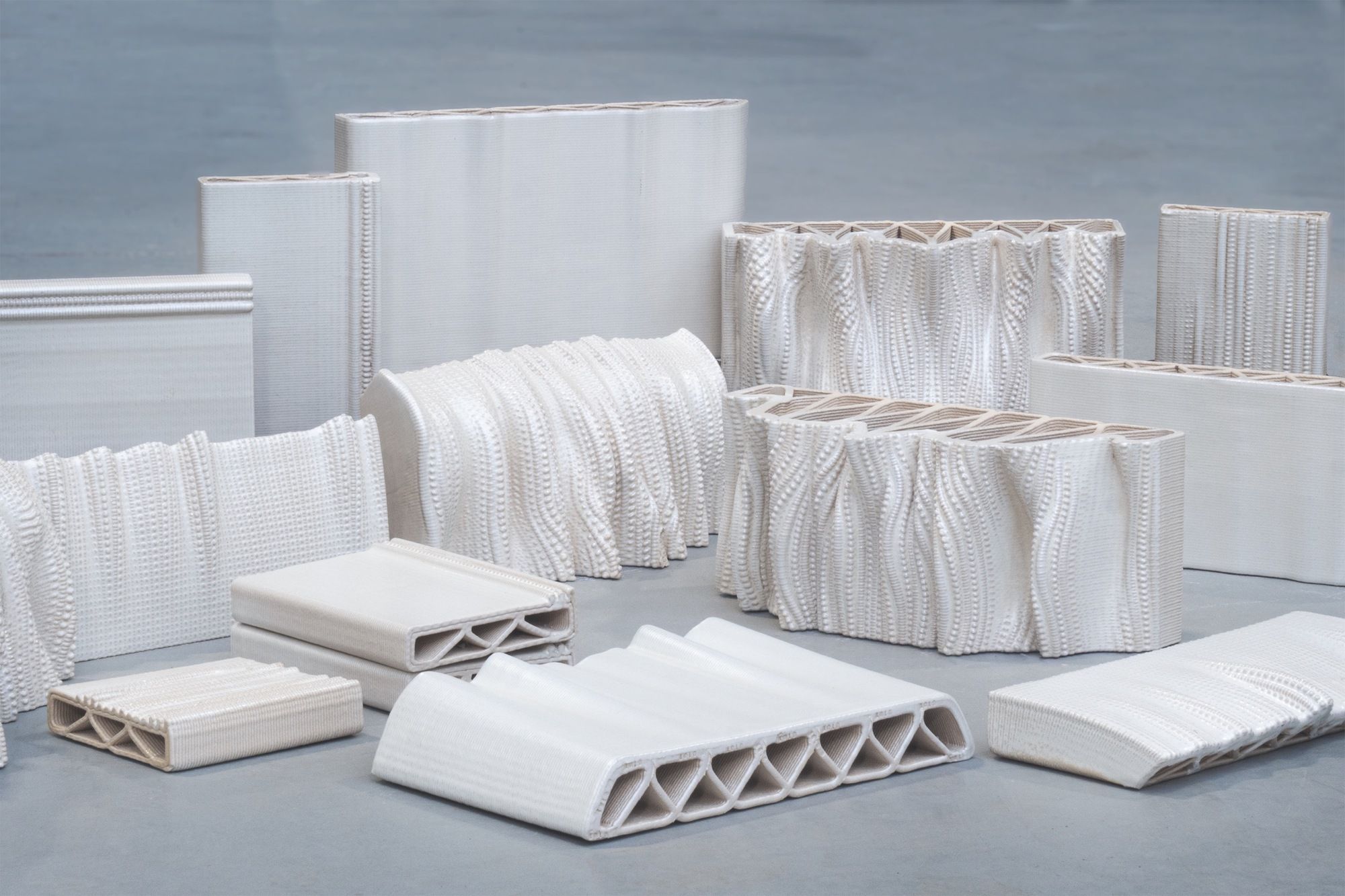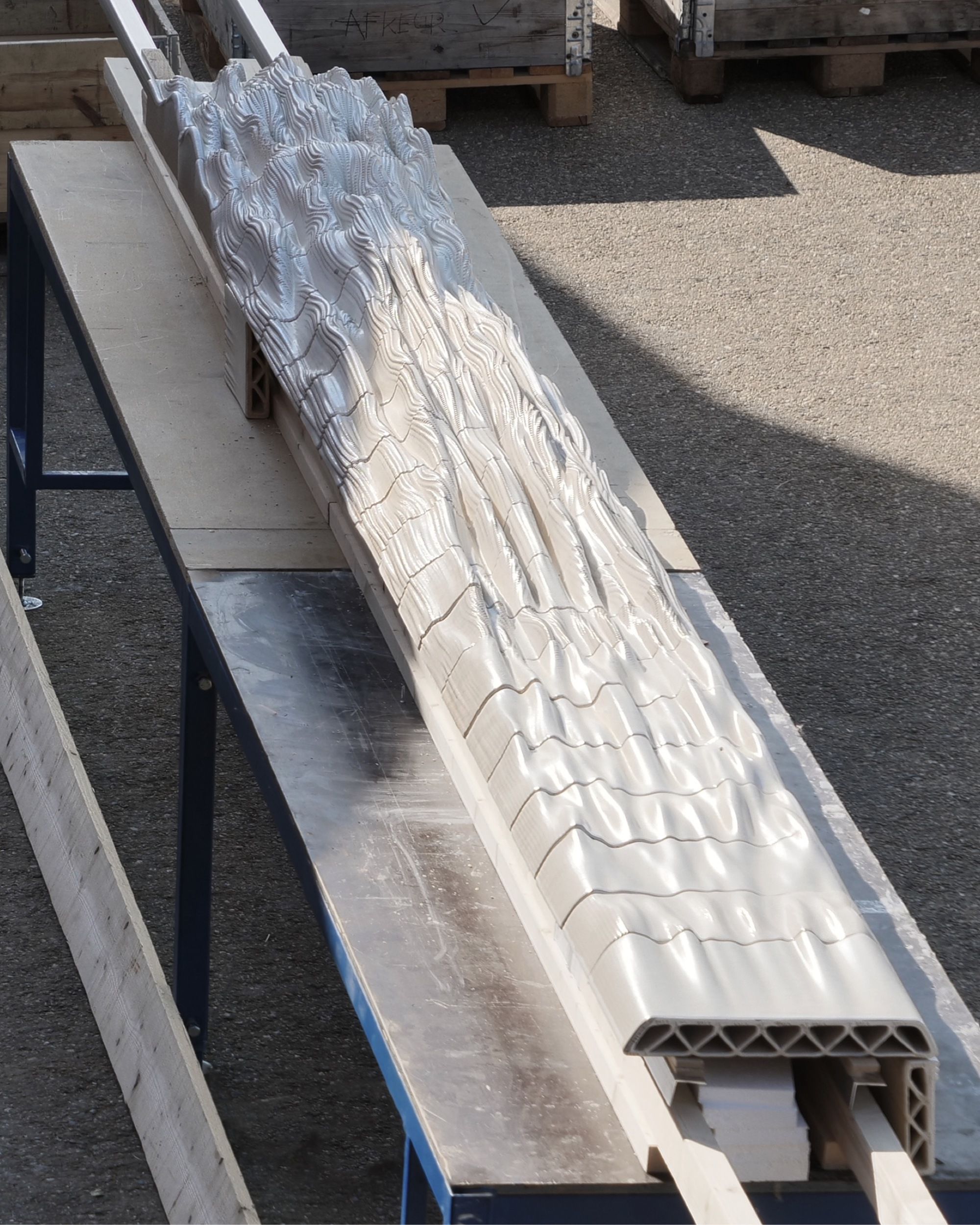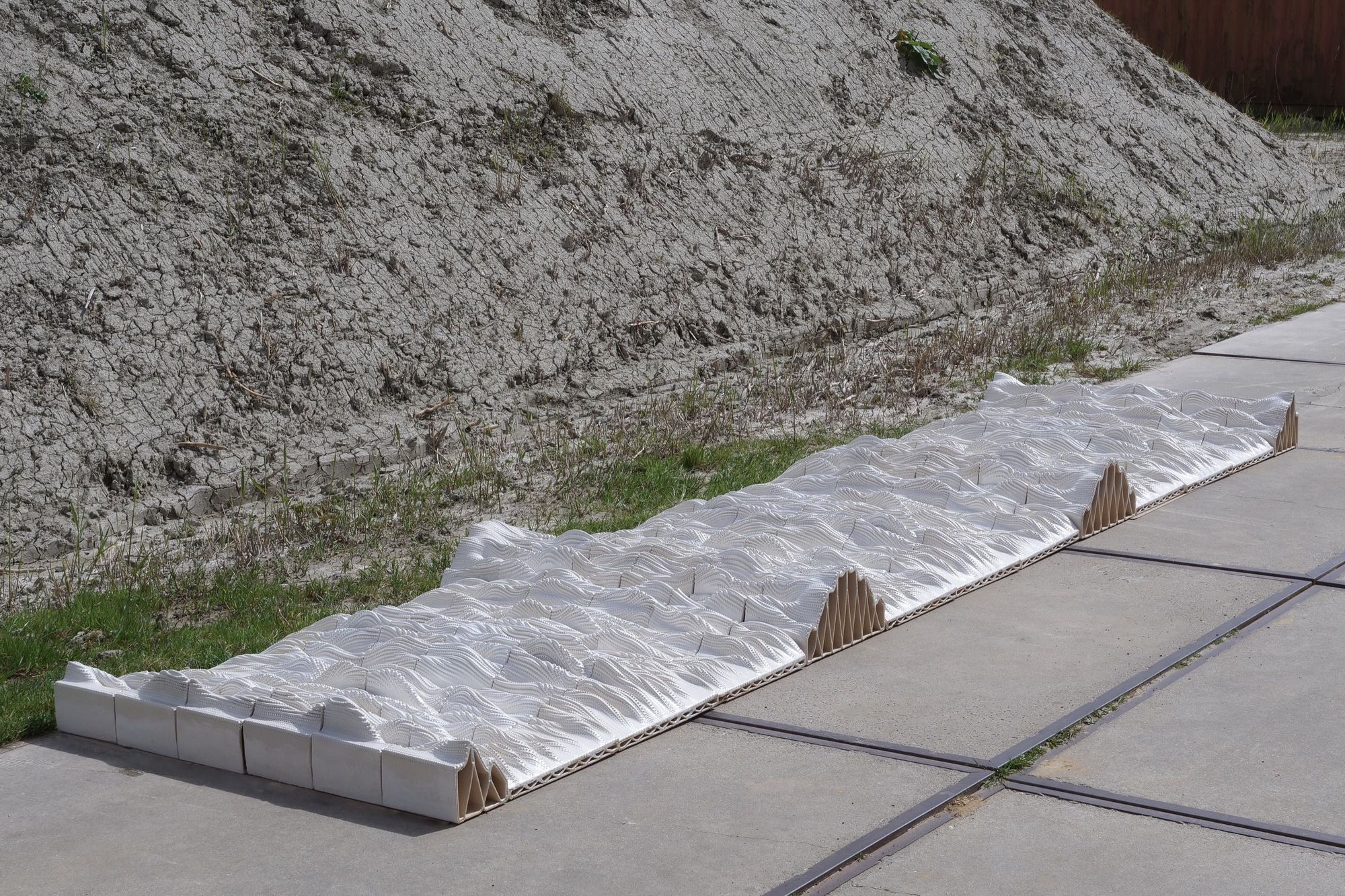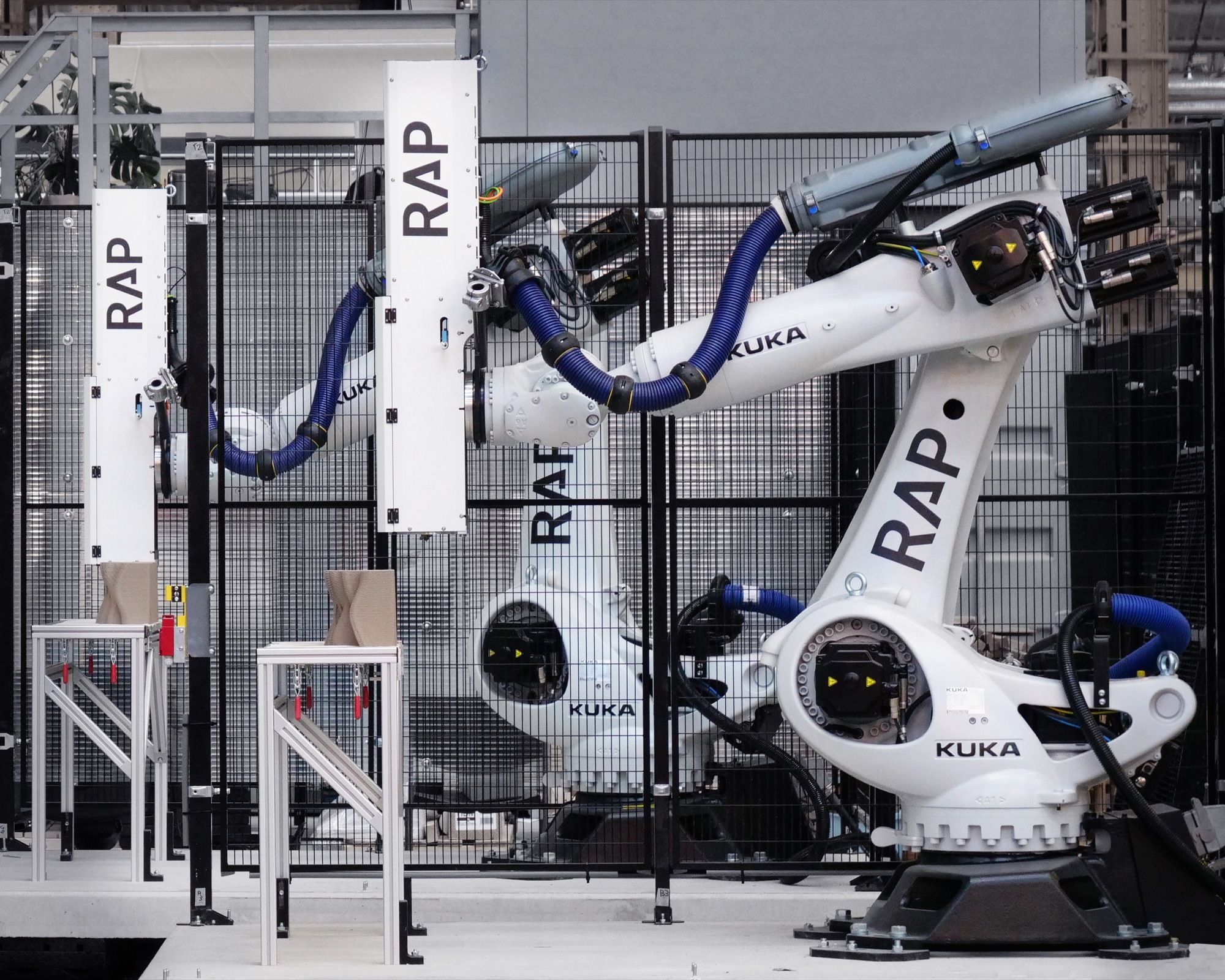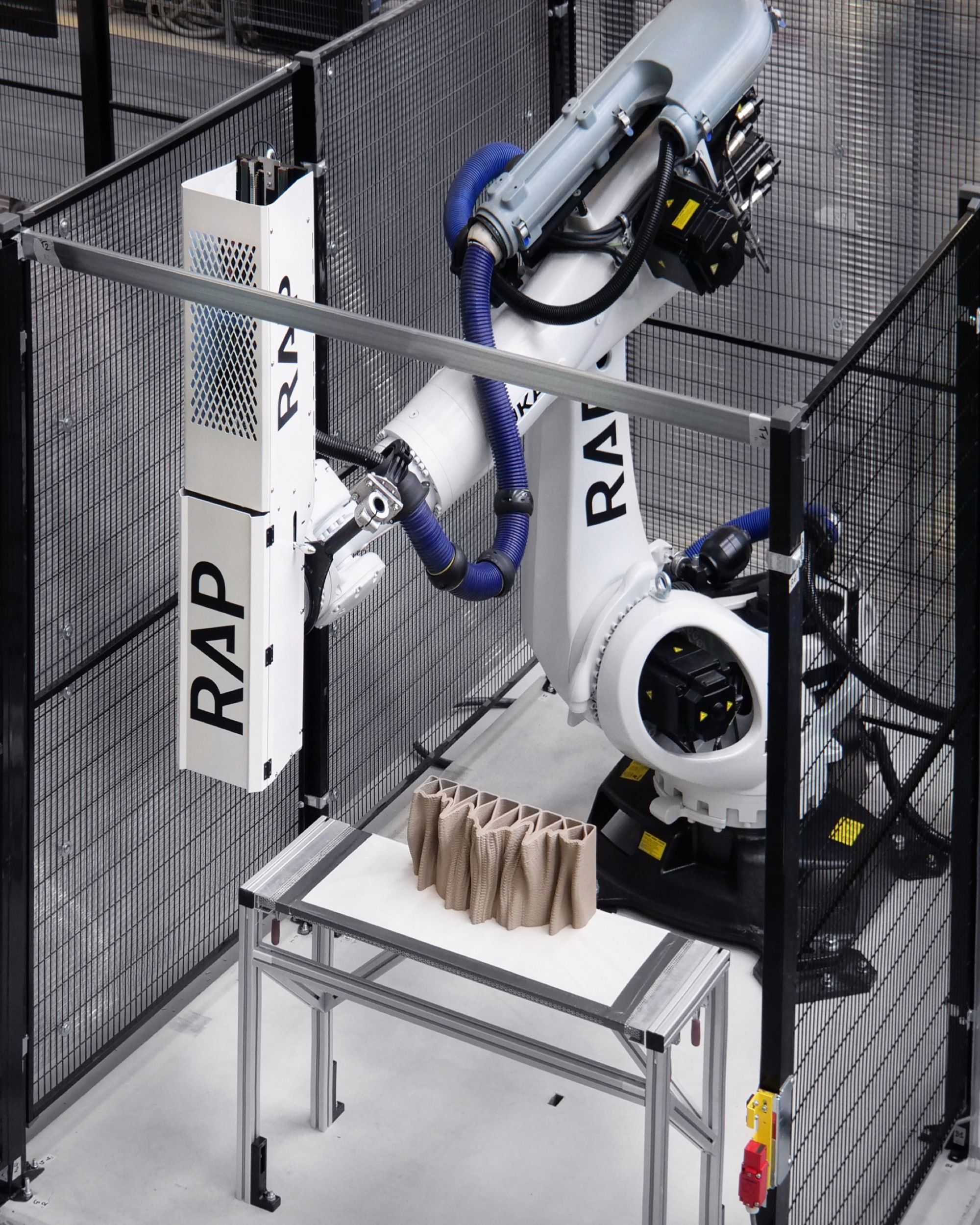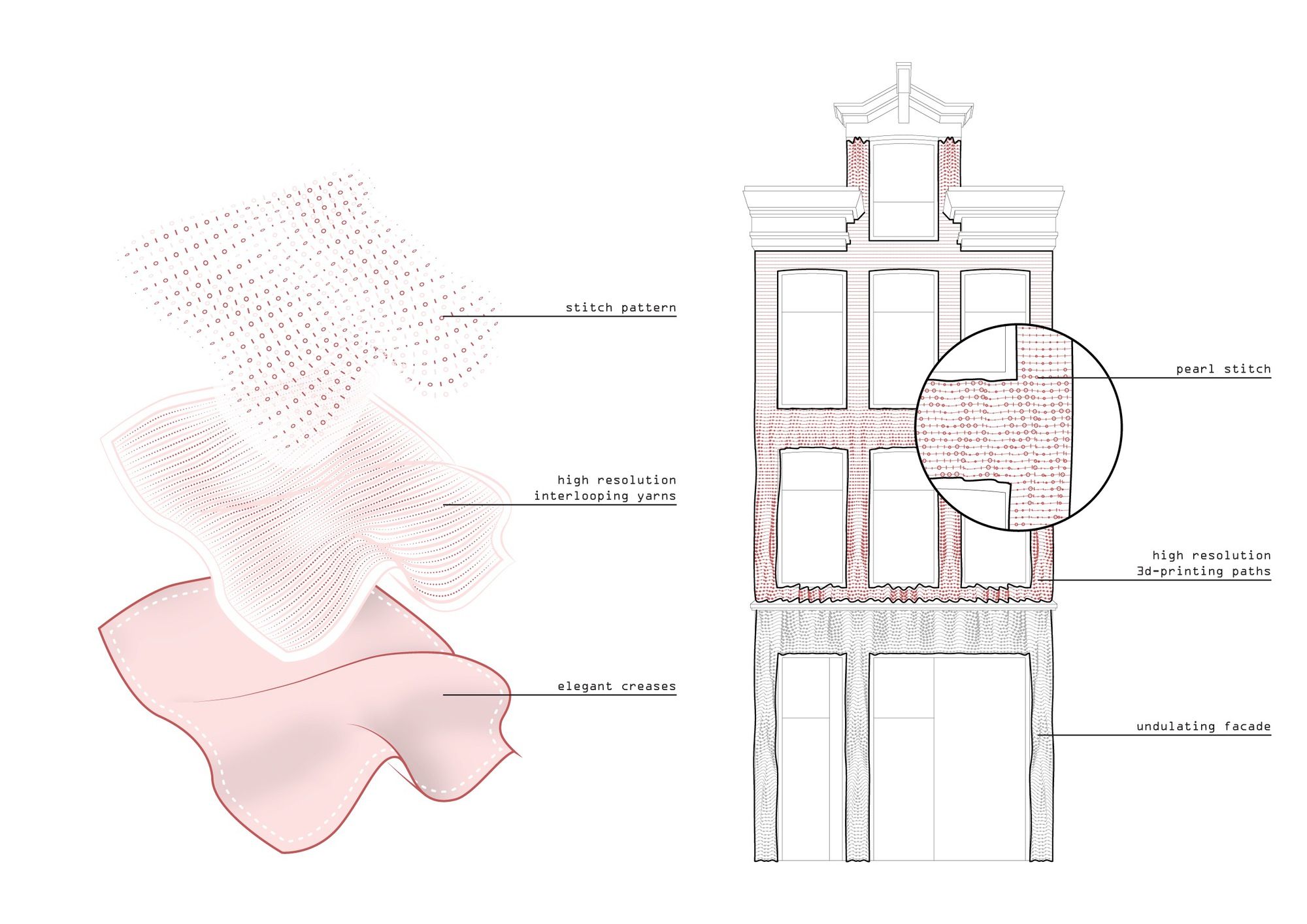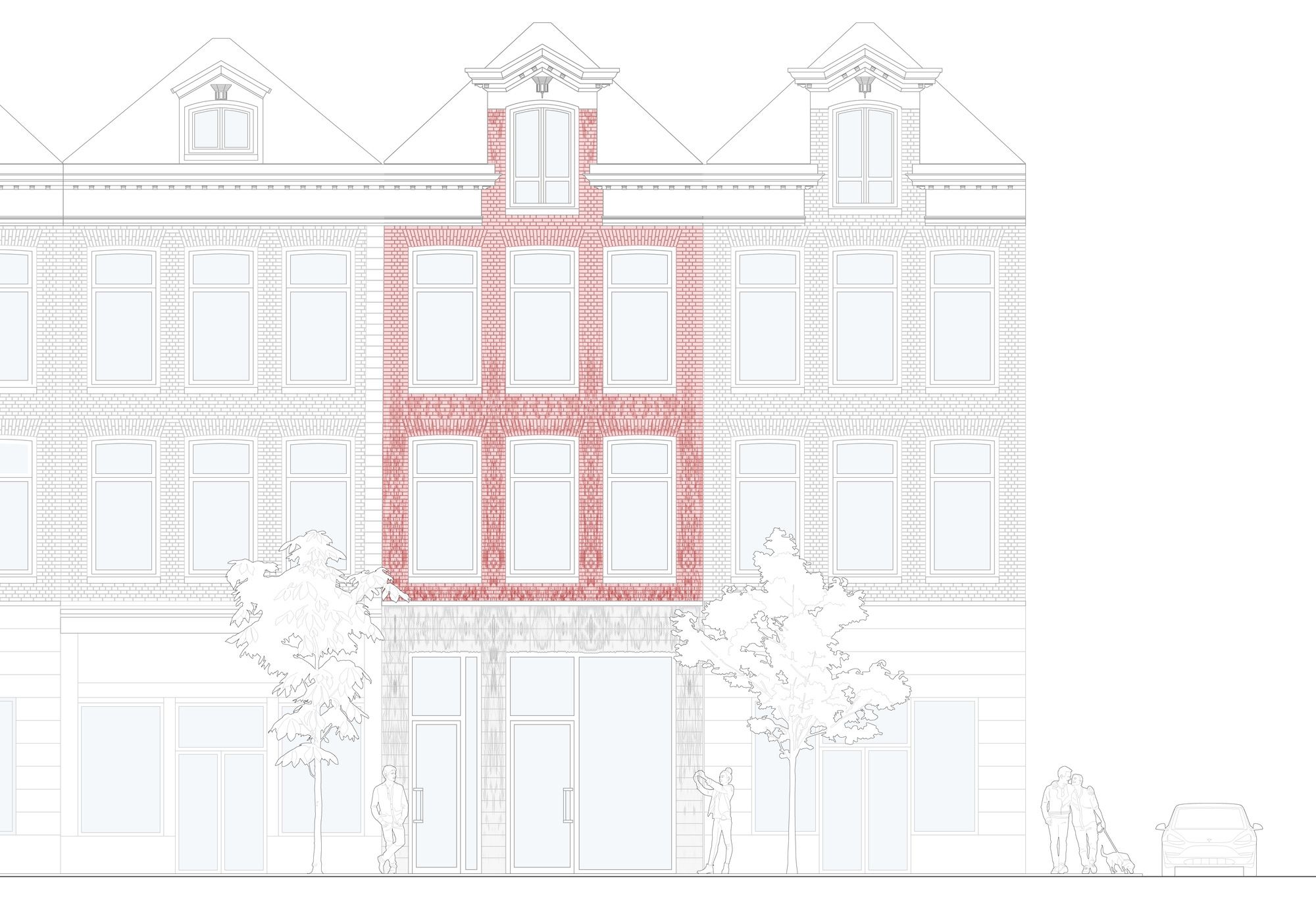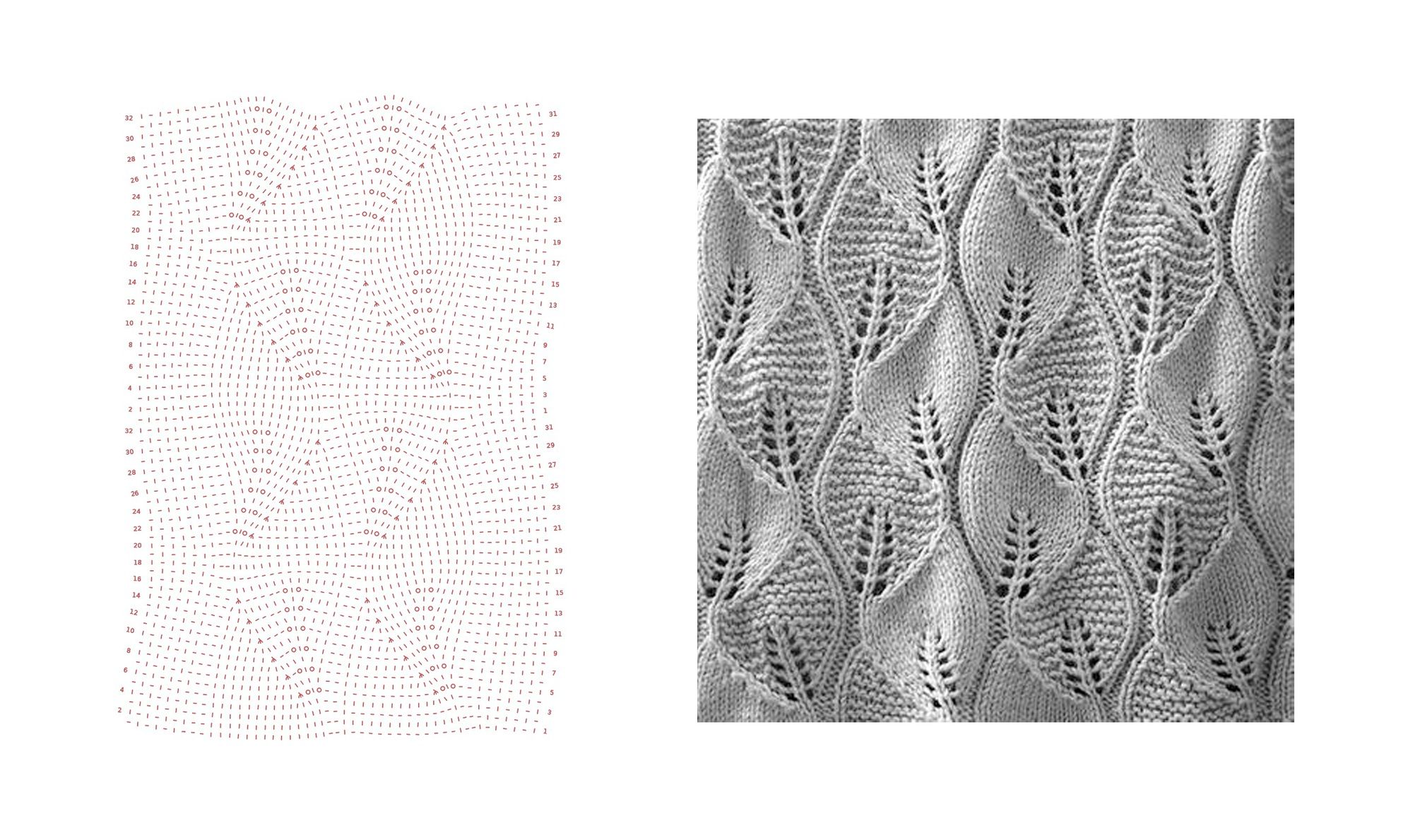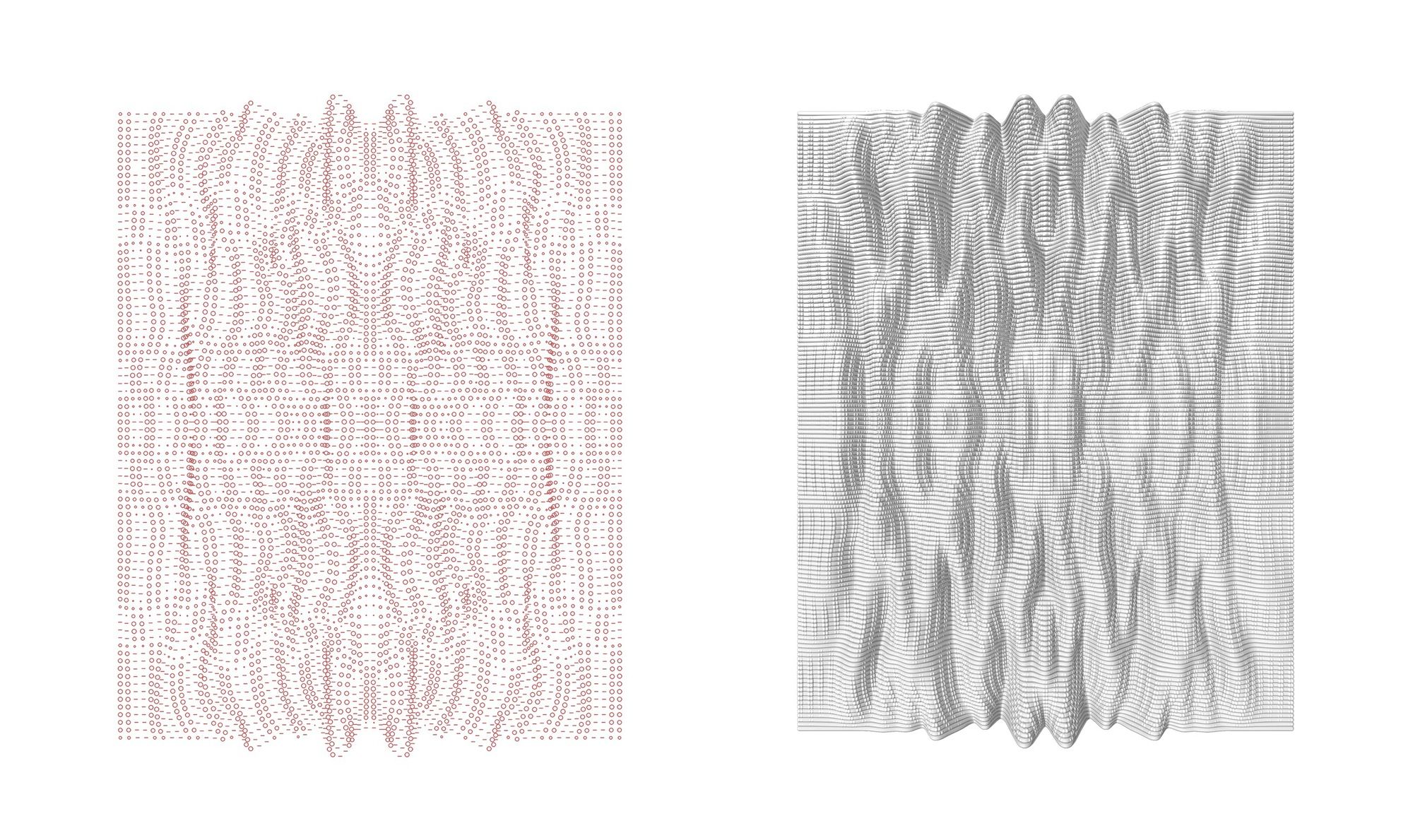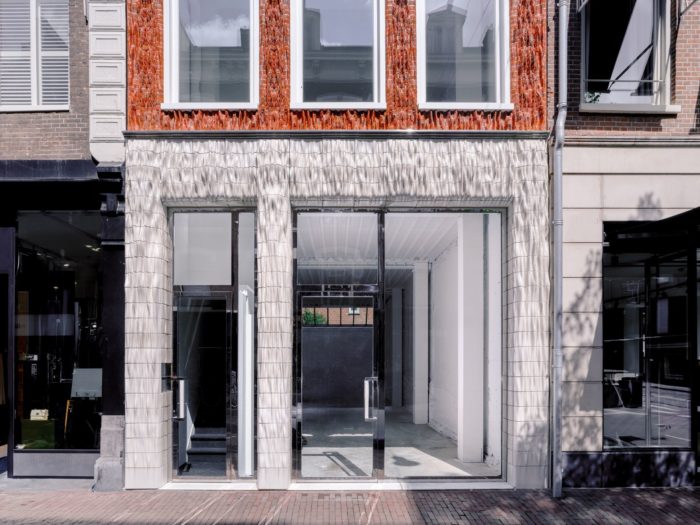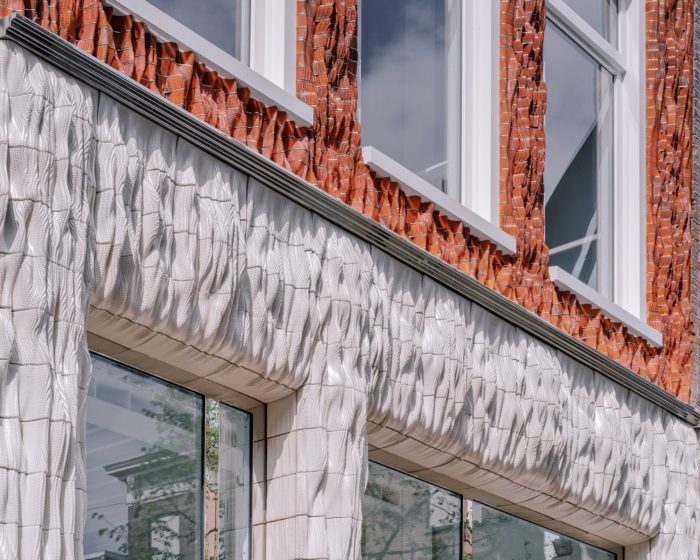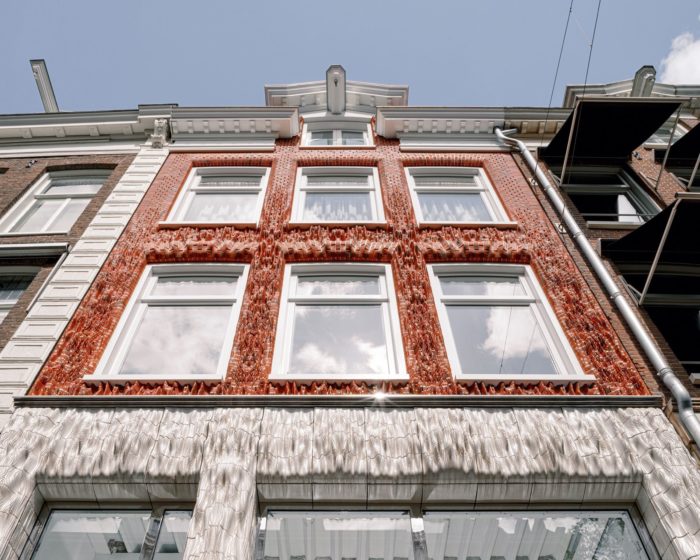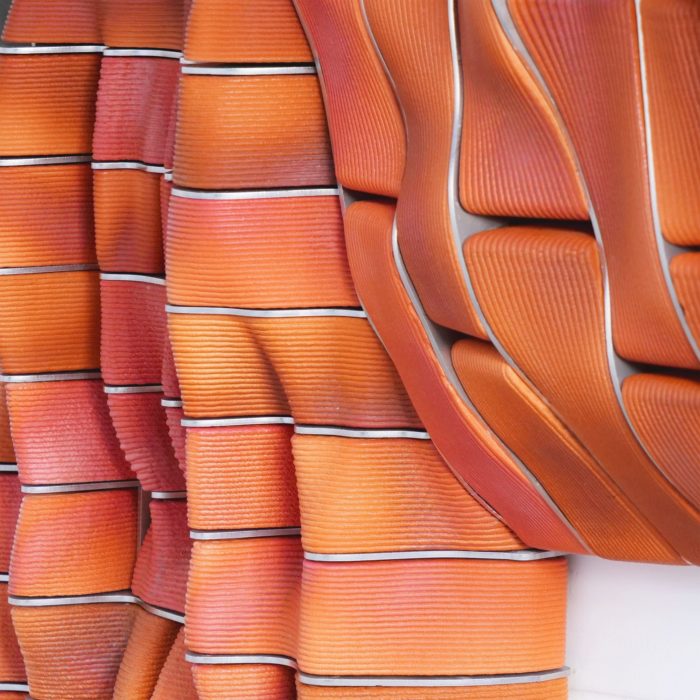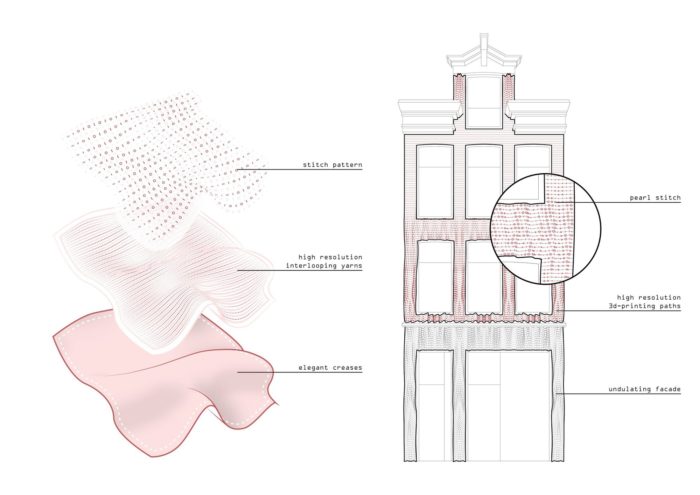Studio RAP claims that The Ceramic House transforms the language of architecture by effectively blending tradition and innovation, reintroducing unique details into the architectural landscape. The studio employs an inventive approach to contemporary architectural design, using advanced digital fabrication processes developed in its manufacturing facility to create customized 3D-printed ceramic tiles. This infusion enhances the historic architecture of the renowned shopping street with a fresh design aesthetic. The outcome, achieved through algorithmic design, 3D-printed ceramics, and expert glazing, is both captivating and tactile, drawing inspiration from the craftsmanship of knitting garments.
The Ceramic House in Amsterdam uses digital design algorithms to reimagine glazed ceramics’ ornamental aspects and design language within the city’s historic landscape. Studio RAP has reproduced the original facade’s outline while preserving the street’s distinct tripartite structure and maintaining the overall character of the location. The embellishments and materials‘ dimensions, proportions, style, and color are carefully coordinated with the adjacent structures, allowing for a seamless blend of traditional and modern architectural elements.
Ceramic House’s Design Concept
The design of the Ceramic House’s exterior incorporates intricate layers that are inspired by textiles. The design includes elegant folds, interwoven threads, and stitching patterns. The undulating nature of the design changes as you approach it from different angles, revealing additional features within the specially crafted ceramic tiles. This creates a high-end boutique that blends in with its historic surroundings while making a unique statement among the neighboring structures.
Studio RAP utilizes its proprietary large-scale 3D-printing technology to create intricately detailed ceramic elements. The studio draws inspiration from the extensive ceramic collection of the Rijksmuseum, which spans the globe. Studio RAP’s commitment to pushing the limits of architectural design is reflected in its forward-thinking approach. Over several years, the studio has developed a unique digital fabrication process that uses sophisticated robotic systems. The team of architects collaborates seamlessly with these robots to create intricate ceramic designs, demonstrating the studio’s dedication to excellence in architectural design.
On the ground level, the frontage displays sizable 3D-printed ceramic tiles, each measuring approximately 40 x 20 cm, adorned in a pearl white glaze with a subtle hint of yellow from Royal Tichelaar. These tiles are crafted to make a visual impact at eye level. They smoothly transition to a flush alignment as they reach the ground, resulting in a cohesive and intricate visual appeal. As we ascend to the upper floors, the facade of the Ceramic House presents 3D-printed bricks coated in three distinct shades of red. These bricks follow the original masonry cross bond and feature abstract ornamentation that gradually diminishes as they ascend. Encased in laser-cut stainless steel cassettes, they pay homage to the original flushes.
Project Info:
Architects: Studio RAP
Year: 2023
Photographs: Riccardo De Vecchi
Main Contractor: Wessels Zeist (VolkerWessels)
Co Architects: Gietermans & Van Dijk
Client: Warenar Real Estate
Contractor Facade Cladding / 3d Ceramic Printing: Studio RAP
Firing And Glazing: Royal Tichelaar
City: Amsterdam
Country: The Netherlands
